#classic ED robert���s story
Explore tagged Tumblr posts
Text
No, I’m never having kids. I’m just gonna have fun.
Before we begin, damn the A R M S 😍. Victoria is acting up (she’s bored according to Katie), spilling a drink on Robert which starts a rant about him never having kids (sure, Rob). In the pub, Robert is one of the gossiping about the Alan/Steph debacle that just went down.





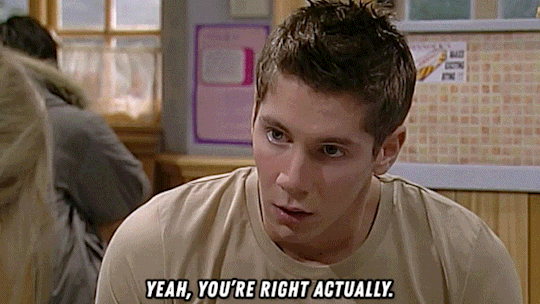



14-Nov-2004
#classic ED#classic ED robert’s story#20041114#episode 3896#classic ED 2004#200411#more or less filler#one word A R M S 😍#you used to love playing video game robert#sure rob no kids 👌#katie sugden#robert sugden#karl davies#victoria sugden#syd woolfe#eric pollard#paddy kirk#emily dingle#viv hope
12 notes
·
View notes
Text
(Mostly putting this here to keep track of it for myself) – the books I read in 2024:
FICTION:
Jen Beagin - Big Swiss
Alice Robinson - The Glad Shout
Miranda July - All Fours
James Frankie Thomas – Idlewild
Monique Wittig - The Lesbian Body
Caoilinn Hughes - The Alternatives
Sally Rooney - Intermezzo
Mary Shelley - Frankenstein
Lydia Davis - Our Strangers
Julian K. Jarboe - Everyone On the Moon Is Essential Personnel
James Baldwin - Giovanni's Room
Samantha Shannon - The Priory of the Orange Tree
Melissa Broder - Milk Fed
NONFICTION:
Jane Ward - The Tragedy of Heterosexuality
Jules Gill-Peterson - A Short History of Transmisogyny
Lee Seong-Bok - Indeterminate Inflorescence: Lectures on Poetry
Rashid Khalidi - The Hundred Years' War on Palestine: A History of Settler Colonialism and Resistance, 1917–2017
Adrienne Rich - Blood, Bread, and Poetry: Selected Prose 1979-1985
Eddie S. Glaude Jr. - In a Shade of Blue: Pragmatism and the Politics of Black America
Virginia Woolf - A Room of One's Own
Monique Wittig - The Straight Mind and Other Essays
MANGA:
Sakaomi Yuzaki - She Loves to Cook and She Loves to Eat (vols. 1-4)
Ryoko Kui - Delicious in Dungeon (volumes 1-14)
Tamifull - How Do We Relationship? (volumes 1-10)
Neji - Beauty and the Beast Girl
Batten - Run Away With Me, Girl (volumes 1-3)
Pageratta - She Becomes A Tree
Takashi Ikeda - The Two of Them Are Pretty Much Like This (Vols. 1-4)
Murata - Catch These Hands! (Vols. 1-4)
Tasuku Kaname - Our Dreams At Dusk (Vols. 1-4)
Akashi - Still Sick (Vols.1-2)
Kuzushiro - The Moon On a Rainy Night (vols. 1-5)
Keigo Shinzo - Hirayasumi (vols. 1-6)
Inui Ayu - Under One Roof Today (vols. 1-2)
Yodokawa - Monthly in the Garden With My Landlord (vols. 1-2)
Inori / Aonoshimo - I'm in Love with the Villainess (vols. 1-5)
Kaoru Mori - A Bride's Story (vols. 1-4)
Arai Sumiko - The Guy She Was Interested In Wasn't A Guy At All (Vols. 1-2)
Takako Shimura - Even Though We're Adults (Vols. 1-8)
Ami Uozumi - Pink Candy Kiss (Vol. 1-2)
COMICS:
Jillian & Mariko Tomaki - Roaming
Max Graves - What Happens Next (start to present)
Brian Chippendale - Ninja
Michelle Perez & Remy Boydell - The Pervert
Khale McHurst - No She's Not My Sister vols 1-5 (& Manic Pixie Dream Girl, & Stone Butch)
Natalia Zajaz - Marion (Vol.1)
Safdar Ahmed - Space Jihad (Vol. 1)
Steven Christie - Good Praxis (Vol. 1)
Aaron Billings - Beatitudes of the Beat: A Mystical Boy Scout Story (Vol. 1)
Joe Sparrow - Homunculus
Margot Ferrick - Yours
Blood & Thunder #2 (ed. Leigh Rigozzi)
Emma Grove - The Third Person
POETRY:
Wisława Szymborska - People on a Bridge
Christina Rossetti - Selected Poems
Lilian Mohin (ed.) - Beautiful Barbarians
Elana Dykwomon - Nothing Will Be As Sweet As The Taste
Izzy Roberts-Orr - Raw Salt
Pooja Mittal Biswas - The Maker of Garlands
e.e. cummings - A Selection of Poems
Grace Paley - Begin Again
*
I'm overall pleased with the amount of reading I did this year. I was working full-time, so I didn't have as much time as I wish I did, but I got into a decent rhythm with it in the last few months especially. In terms of personal trends, I guess I can identify that this was The Year I Went Nuts For Yuri (amassing a huge treasure-trove of beautiful lesbian manga to read on my tablet), The Year I Got Back Into Fun Novels (books like Big Swiss and Milk Fed and Idlewild were such pure sources of pleasure), and The Year I Started Collecting Bloomsbury Classics (of which I've presently read very few, but they look ridiculously lovely on the shelf, and I plan on reading them all eventually).
2 notes
·
View notes
Text
Listed: Fortunato Durutti Marinetti

Beginning with 2020’s Desire, a self-released cassette, Toronto-based, Turin-born Daniel Colussi, has explored his “poetic jazz rock” (Colussi’s own apt coinage) across three releases under the moniker Fortunato Durutti Marinetti. The instrumentals flow and waver: now flashes of synthesizer keys or strings; now an inquisitive, lightly warped guitar line — the music floats then jumps but never rushes. His vocals — and lyrics — recall stated 1970s influences like Lou Reed or a spoken-word Robert Wyatt, but also Leonard Cohen or, more contemporarily, Destroyer’s Dan Bejar. Alex Johnson found Colussi’s latest release, Eight Waves In Search Of An Ocean, “engrossing — although not always comfortably…a record that rewards the delayering effect of multiple listens.”
Gary Zhexi Zhang — “The Tourist”
Zhang’s documentary ostensibly tells the story of Ali Sultan Issa, who led Zanzibar’s independence from Britain in 1963. Issa is a totally fascinating and complicated Zelig-like figure who seemed to be present for every revolutionary moment in the middle of the century. He hung out with Castro, Mao and also the CIA. I can’t believe how effectively and delicately Zhang is able to tell what a massive story about empire is — de-colonization, the optimism of mid-twentieth century socialist movements and the brutal 80s neoliberal response. This film also introduced me to the song “Super Snooper”by 1970s Italo disco crew La Bionda.
Annette Peacock — Unsung Heroine
A 12-minute doc on Annette Peacock circa 2000, as she recorded with a string quartet in Oslo for ECM. It’s not the most celebrated era of her career, but An Acrobat’s Heart is an interesting album of smoldering baroque torch songs. There’s great-to-see footage of her walking around Oslo in leather pants and also, it’s great to hear her speaking voice, which has that classic US drawl of an artist who’s lived through decades of chaos.
DJ Voices — Hemlock Nights @ Honcho Campout 2023
When NYC’s DJ Voices came to Toronto last summer my crew and I danced our asses off all night long. It was a good night and I’m glad it happened.
Lou Sheppard with Pamela Hart — Rights Of Passage
A beautiful, smart record that uses the metaphor of a river’s legal right to flow (riparian rights) to talk about property vs. public space, control of and access to resources and forms of enclosure. The record is also about queerness, and how queerness is or is not permitted to exist within particular defined spaces. This record is technically a sister artifact to Lou’s video/sound installation at the Art Gallery of York University, but it works totally well on its own as a gorgeous LP.
Ed Gray — Different Drummer : Elvin Jones
youtube
1979 documentary on Elvin Jones — a weird period for him. I think like most people, I know him primarily through his 1960s albums with John Coltrane. This doc has beautiful footage of Elvin hanging out with his family in the backyard as well as him in the studio describing his relationship to the cymbals in terms of different colors — chromesthesia. I also like his sleazy late 70s style — white leather loafers, a mesh shirt and a cigarette dangling as he absolutely shreds on his kit.
Elvis Presley — Unchained Melody (Rapid City June 21, 1977)
youtube
An insane document of Elvis in the very final throes of his imperial era. His banter is barely intelligible. Coca Cola cups scattered everywhere. Everyone in the band is sweaty and hairy. Wide bellbottoms all around. A middle-aged stagehand (who Elvis refers to as “son”) awkwardly holds the mic up to Elvis. Rising out of all this confusion, Elvis begins an extremely personal rendition of this Righteous Brothers song. There are pregnant pauses, as if he loses his place in the song, and there is no consistent tempo until the band kicks in, at which point all of Rapid City levitates into outer space. And two months later, Elvis was dead.
The Invisible Committee — The Coming Insurrection
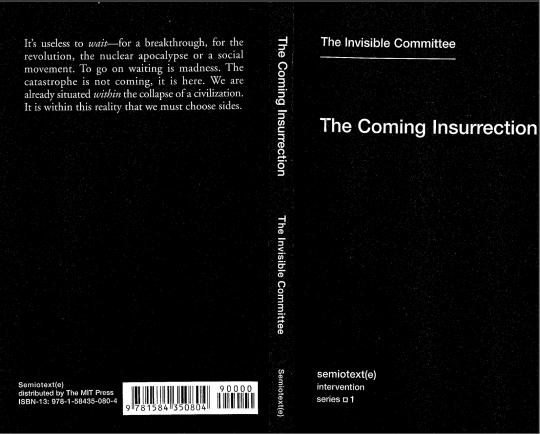
In his Dusted review of my album, Alex Johnson singled out the words and language in my song “Smash Your Head Against The Wall.” When I think back to writing that song, I think of reading The Invisible Committee’s The Coming Insurrection. Their language is totally polemic and fiery and outrageous, but purposely and with intent. Oftentimes they’re playing with that caricatured idea of “the radical left.” Not everyone appreciates this approach: apparently it freaked out US neocon broadcaster Glenn Beck enough that he warned his followers about this book’s evil. My copy has many underlined passages that I return to again and again for guidance and inspiration.
Bruford — Back To The Beginning (Rock Goes To College, March 17th, 1979)
youtube
Annette Peacock’s second appearance on this list — too much? In this performance she casually strolls into the Bruford zone to provide some female levity to this otherwise brutally nervous and sweaty prog rock crew. There’s a strong argument that this song sucks because it suffers from that thing of prog/jazz virtuosos trying to play basic heavy rock and failing because they’re too good. But I think it’s awesome, especially when Annette lets her raincoat theatrically drop to the floor to indicate that she has officially assumed control of the proceedings.
Joni Mitchell — In France They Kiss On Main Street (Santa Barbara Bowl, 1979)
youtube
I like this era because it captures Joni just as she’s really alienating the majority of her audience by desecrating her folk-rock legacy via fully embracing smoothed out jazz fusion tones. She’s playing with a squad of absolute rippers: Metheny, Pastorius, Lyle Mays, Michael Brecker and Don Alias. Everyone is at the top of their game; everyone is in the zone. I like this ferocious live version of this song better than the studio version.
Tindersticks — The Ballad of Tindersticks (2 Meter Sessions, June 7, 1997)
youtube
For me Tindersticks are a deep well of inspiration, to which I can continually return for sustenance, guidance and nourishing refreshment. I love it all: the early baroque albums, the mid period soul albums, the soundtracks, the solo records. I think their last record was phenomenal. They are masters of subtly adjusting their songwriting as a way of unlocking vast new territories to explore. They make it all their own. I pick this particular clip because I like how the entire band is sweating profusely.
#dusted magazine#listed#daniel colussi#fortunato durutti marinetti#gary zhexi zhang#annette peacock#dj voices#lou sheppard#pamela hart#ed gray#elvin jones#elvis presley#the invisible committee#bruford#joni mitchell#tindersticks
2 notes
·
View notes
Photo
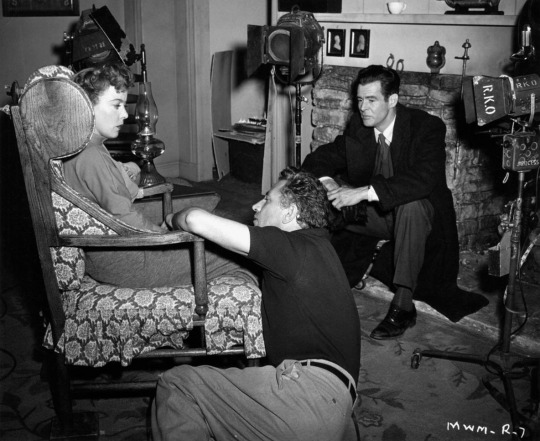
NOIR CITY 19 wraps up today at Oakland's Grand Lake Theatre with ON DANGEROUS GROUND (1:00), THE PROWLER (3:00), ODDS AGAINST TOMORROW (7:00) and FORCE OF EVIL (9:00). All films introduced by Eddie Muller.
Sunday Matinée • March 27
ON DANGEROUS GROUND1:00 PM
Big-city cop Jim Wilson (Robert Ryan), embittered by his job, has become a ticking time bomb. Aware that Wilson's unhinged brutality is a lawsuit waiting to happen, his boss sends him to a snowy upstate town to cool off. There, Wilson meets Mary Malden (Ida Lupino), a sage blind woman who sees through his cynicism and vitriol. But before she can melt his defenses, a young girl is found murdered, and Wilson throws himself into the vengeful manhunt for the killer. Ryan and Lupino give powerhouse performances in this unusually structured film, ingeniously and aggressively directed by Nicholas Ray. Half of it takes place in the nocturnal city, the other half in blinding white snowscapes; notions of natural and human duality abound. Featuring brilliant cinematography by George Diskant and one of Bernard Herrmann's most distinctive scores, which plays up the film's themes through an astounding juxtaposition of propulsive brass and wistful strings.
1952, RKO [Warner Bros.] 82 minutes. Screenplay by A. I. Bezzerides, based on the novel Made with Much Heart by Gerald Butler. Produced by John Houseman. Directed by Nicholas Ray.
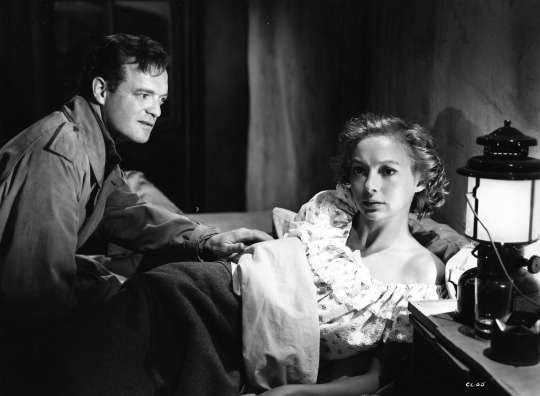
THE PROWLER 3:00 PM
Patrolman Webb Garwood is more interested in achieving the American Dream than he is protecting it for others. After answering a woman's distress call about a peeping tom, Garwood hatches a nefarious plot to worm his way into her affluent but lonely life — and into her husband's life insurance policy. Van Heflin and Evelyn Keyes give stellar performances in this disturbing spider-and-fly romance, written covertly by legendary blacklisted screenwriter Dalton Trumbo and directed by the soon-to-be-blacklisted Joseph Losey. Largely dismissed by critics upon its release, it's now regarded as Losey's best American film, one that offers a compelling warning about small-minded people's willingness to abuse power for selfish gain. Restored in 2007 by the Film Noir Foundation and UCLA Film & Television Archive, the first triumph in a long-running partnership.
1951, Horizon Pictures/United Artists [FNF/UCLA Film & Television Archive]. 92 minutes. Screenplay by Dalton Trumbo (fronted by Hugo Butler) . Based on a story by Robert Thoeren and Hans Wilhelm. Produced by John Huston and Sam Spiegel (as S.P. Eagle). Directed by Joseph Losey.Sunday Evening •
ODDS AGAINST TOMORROW 7:00 PM

Disgraced ex-cop Dave Burke (Ed Begley) masterminds a piece-of-cake bank robbery in upstate New York, but to pull it off he requires the cooperation of two dangerously mismatched cohorts: hot-headed redneck war veteran Earle Slater (Robert Ryan) and gambling addict jazzman Johnny Ingram (Harry Belafonte); their racist antagonism threatens to thwart a seemingly fool-proof plan. Silent producer Belafonte hired blacklisted screenwriter Abraham Polonsky to adapt William P. McGivern's novel, specifically to subvert the sanctimony of The Defiant Ones (1958), a "feel good" movie about racism. Robert Wise's direction is as fresh and expressive as anything being done by the French New Wave of the period, and the score by John Lewis's Modern Jazz Quartet is innovative and exhilarating. With vivid supporting performances by Shelley Winters, Kim Hamilton, and Gloria Grahame. An all-time classic heist thriller—and much more.
1959, United Artists [Park Circus]. 96 minutes. Screenplay by Abraham Polonsky, with Nelson Gidding (fronted by John O. Killens). Based on the novel by William P. McGivern. Produced by Harry Belafonte (uncredited) and Robert Wise. Directed by Robert Wise.

FORCE OF EVIL 9:00 PM
One of the most distinctive works of the noir era, Abraham Polonsky's directorial debut is an exposé of the New York numbers racket and a riveting tale of a fallen man's attempt to reclaim his soul (John Garfield, in one of his best roles). Unfortunately for Polonsky, the House Committee on Un-American Activities also felt the film was a thinly veiled attack on the nation's capitalist system, suggesting parallels between the operations of businessmen and gangsters. Polonsky was blacklisted, unable to put his name on any work he produced over the next twenty years. Force of Evil is innovative and superlative in every respect; its stylized art direction complementing vivid New York location footage. With an evocative score by David Raksin and memorable performances by Thomas Gomez, Beatrice Pearson, Marie Windsor, and Roy Roberts.
1948, MGM [Park Circus]. 78 minutes. Screenplay by Abraham Polonsky and Ira Wolfert, from Wolfert's novel Tucker's People. Produced by Bob Roberts. Directed by Abraham Polonsky.
#noir city#noir city 19#film noir festival#restoration#film restoration#on dangerous ground#robert ryan#ida lupino#nick ray#the prowler#evelyn keye#van heflin#odds against tomorrow#harry belafonte#ed begely#force of evil#john garfield#abraham polonsky
24 notes
·
View notes
Text
Best Corrupt Cop Movies to Watch After Training Day
https://ift.tt/3chCEB5
Training Day is one of the archetypal crime dramas of its time. It features a classic standoff between a young, fresh-off-the-street rookie police officer named Jake Hoyt (Ethan Hawke) and his veteran partner Alonzo Harris (Denzel Washington). The older cop is ostensibly evaluating his young partner, but in actuality he’s breaking Jake hm down and trying to corrupt him–just as Alonzo himself, one of the great screen monsters of the past 20 years, is corrupt beyond all redemption. Here is a supposed officer of the law who acts more like a crime boss, ruling over his neighborhood with an iron fist.
The tension that burns at the center of the movie–will Jake be turned and will Alonzo get his comeuppance?–forms the bedrock of a classic dramatic scenario. The power inherent from being in law enforcement can be both a force for good and a weapon of evil. The ability to wield that power over the lives of so many others can lead anyone or any institution to a moral crossroads. And whether a single cop or an entire police force can stand up for what’s right or descend into a cesspool of rot and amorality has been the basis of some of our greatest movies.
This is by no means a comprehensive list, but if you’ve recently had a chance to revisit Training Day on Netflix, then here are five more superb movies in which a lone cop goes head to head with that insidious corruption. All the movies feature drugs, guns, money, and sometimes sex; but in the end, the most powerful and dangerous narcotic of all turns out to be power.
Serpico (1973)
Legendary director Sidney Lumet’s classic 1970s police drama was one of several films that established Al Pacino as among the greatest actors of his generation, and kicked off a loose trilogy of movies from Lumet himself that focused on police corruption in New York City–others being the less iconic but equally brilliant Prince of the City (1981) and Q&A (1990).
Serpico is also the only film on this list based on a real person: Frank Serpico, a plainclothes detective who uncovered widespread corruption and eventually blew the whistle on it during his 11 years of service. In keeping with the true-life inspiration for the story, Lumet shot the film in a documentary-like style and chose some of the grittiest locations in New York City in which to work. Pacino himself met with Serpico several times, immersing himself in the character and his life.
The result was one of the first major American movies to tackle real life police corruption head-on, and what’s frightening is that there is no single villain for Serpico to go up against: it’s the entire NYPD itself, which came under extensive investigation thanks to the real Serpico’s actions.
Internal Affairs (1990)
Richard Gere stars in this Mike Figgis-directed film as Dennis Peck, a corrupt Los Angeles police officer and womanizer who comes under investigation by Raymond Avilla (Andy Garcia), an Internal Affairs officer intent on taking down Peck even as the department around him portrays him as a role model. But the wily Peck has other plans, including turning Avilla and his wife (Nancy Travis) against each other.
Set in pretty much the opposite of Serpico’s rough NYC environs, Internal Affairs, as its punning title indicates, is less about widespread systemic corruption and more about ideas of masculinity. Gere’s charm and sex appeal is put to wicked use as Peck fucks or threatens to fuck the wife of every man he crosses paths with, using that as a weapon to undermine them as men and leverage his power over them. Using his family as cover for his nefarious deeds–he has three ex-wives and eight kids to support–puts a dark twist on the idea of the male as the head of the household.
Garcia’s Avilla is flawed as well, racked with jealousy and anger management issues, which gives what could have been just a sleazy potboiler an extra level of complexity. And no amount of ravishing L.A. locations will wipe away the slime at the heart of this low-key thriller.
L.A. Confidential (1997)
The late Curtis Hanson’s masterful adaptation (with co-writer Brian Helgeland) of James Ellroy’s novel remains one of the best films of the 1990s, mixing fictionalized versions of real-life figures with indelible characters in a complex, suspenseful, and epic tale of police corruption and Hollywood celebrity.
The two cops at the center of the story are LAPD Sgt. Ed Exley (Guy Pearce) and officer Bud White (Russell Crowe); the former is upstanding yet aggressively ambitious while the latter is a blunt weapon used–unknowingly at first–by precinct captain Dudley Smith (James Cromwell) to advance Smith’s own ends. Also in the mix are a high-end prostitute (Kim Basinger), a jaded detective (Kevin Spacey), and a tabloid magazine editor (Danny DeVito), all of whom are caught in the LAPD’s web of corruption.
L.A. Confidential builds its story brilliantly to an explosive third-act confrontation between White and Exley that gives way to an even more thrilling motel shoot-out at the film’s climax. Relatively unknown at the time, Crowe and Pearce are outstanding while Basinger shines in a career-peak performance. L.A. Confidential takes the “cop vs. cop” scenario and drenches it in neo-noir style and Tinseltown sleaze, creating an unforgettable portrait of power gone mad.
Cop Land (1997)
An early drama from writer/director James Mangold–now known for films like Logan and Ford v. Ferrari—Cop Land stars Sylvester Stallone as Freddy Heflin, the sheriff of a small New Jersey town that is a bedroom community for a number of New York City cops. Although Freddy, who is partially deaf and perceived as somewhat slow-witted, reveres the cops and aspired at one time to be an NYPD officer himself, he becomes gradually aware of the rampant corruption among them. Eventually he must act.
Read more
Movies
Taxi Driver: A Look at NYC’s Inglorious Past
By Tony Sokol
Culture
The Real Goodfellas: Gangsters That Inspired the Martin Scorsese Film
By Tony Sokol
Stallone put on 40 pounds for the role of Heflin and his performance cast him in a new light as a serious actor after years of mindless action vehicles or Rocky sequels. Mangold’s screenplay may be too overly complicated for its own good, but the lonely small-town cop making a stand against the men he once looked up to is a poignant, haunting image. The film is also bolstered by great work from an all-star cast that includes Robert De Niro, Harvey Keitel, Ray Liotta, Robert Patrick, and Annabella Sciorra.
The Departed (2006)
Based on the 2002 Hong Kong film Infernal Affairs, The Departed is an operatic, grand crime thriller as only the great Martin Scorsese can do it. Leonardo DiCaprio stars as Billy Costigan Jr., a Massachusetts State Police recruit forced to go undercover and infiltrate the gang of crime boss Frank Costello (an over-the-top Jack Nicholson). Meanwhile another State Police officer, Colin Sullivan (Matt Damon), is actually a mole for Costello inside the force, and the machinations of both Costello and the police eventually pull the two undercover agents–one good but troubled, one corrupt–into each other’s orbit.
Loosely inspired by real-life figures like corrupt FBI agent John Connolly and Boston crime kingpin Whitey Bulger, The Departed has more twists than a winding mountain road and all the double-crosses and betrayals can be tricky to navigate, even for fans of the Hong Kong movie it dramatically remakes, Infernal Affairs.
But Scorsese’s expertise with this kind of material leaps off the screen and his cast is impeccable (including a career-best performance from Mark Wahlberg and a scene-stealing turn by Alec Baldwin). While it can be a little on-the-nose at times–we’re looking at you, Mr. Rat on the apartment terrace–The Departed nevertheless conveys its cynical view of human nature with style, wit and manic energy. As it turns out, we’re all basically fucked up and vulnerable to being fucked with.
cnx.cmd.push(function() { cnx({ playerId: "106e33c0-3911-473c-b599-b1426db57530", }).render("0270c398a82f44f49c23c16122516796"); });
The post Best Corrupt Cop Movies to Watch After Training Day appeared first on Den of Geek.
from Den of Geek https://ift.tt/3vkE1I6
12 notes
·
View notes
Text
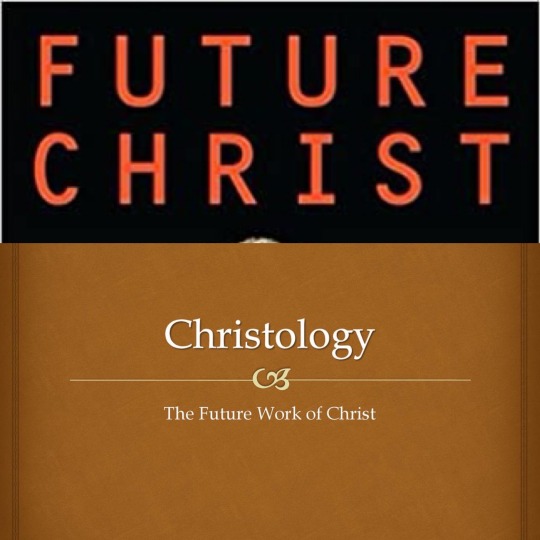
Academic Bias on the Web
By Author Eli Kittim
——-
I recently submitted a version of the following post in the *Group for New Testament Studies* (on Facebook) but, regrettably, the administrators did not approve it. Yet, given the validity of the Greek exegesis, it certainly deserves serious academic consideration. This is indicative of academic discrimination based on their own personal biases.
——-
2 Principles of Biblical Hermeneutics Should Guide our Investigation
Two principles of Biblical hermeneutics should be considered foundational. Exegetes must interpret the implicit by the explicit and the narrative by the didactic. In practical terms, the *NT epistles* and other more *explicit* and *didactic* portions of Scripture must clarify the implicit meaning and significance of the gospel literature, which, by the way, is not biographical but *theological* in nature, as Bultmann, Crossan, Lüdemann, Licona, Crossley, Robert L. Thomas and F. David Farnell, Dennis MacDonald, Robert Gundry, and Thomas L. Brodie, among others, have clearly demonstrated!
——-
This *Greek exegesis,* translated straight from the text itself, challenges the classical Christian interpretation, which is primarily founded upon historical-fiction narratives. This *Greek exegesis* not only complements the Jewish messianic expectations but it also fits perfectly with the end-time messianic death & resurrection themes alluded to in the Old Testament (see e.g. Isa. 2.19; Dan. 12.1-2)! In short, both the Hebrew and Christian Scriptures seem to say the exact same thing, namely, that the Messiah will appear “once for all at the end of the age” (Heb. 9.26b)!
——-
*The Future Christ* Greek Exegesis
According to the New Testament’s explicit and didactic portions of Scripture, Christ is *born* when time reaches its fullness or completion, expressed in the apocalyptic phrase τὸ πλήρωμα τοῦ χρόνου:
ὅτε δὲ ἦλθεν τὸ πλήρωμα τοῦ χρόνου,
ἐξαπέστειλεν ὁ θεὸς τὸν υἱὸν αὐτοῦ,
γενόμενον ἐκ γυναικός (Gal. 4.4).
According to the principle of expositional constancy, the chronological time period known as “the fullness of time” (τὸ πλήρωμα τοῦ χρόνου) in Gal. 4.4 is defined in Eph. 1.9-10 as the consummation of the ages (cf. Heb. 9.26b NASB):
γνωρίσας ἡμῖν τὸ μυστήριον τοῦ θελήματος
αὐτοῦ, κατὰ τὴν εὐδοκίαν αὐτοῦ ἣν
προέθετο ἐν αὐτῷ εἰς οἰκονομίαν τοῦ
πληρώματος τῶν καιρῶν,
ἀνακεφαλαιώσασθαι τὰ πάντα ἐν τῷ
Χριστῷ, τὰ ἐπὶ τοῖς οὐρανοῖς καὶ τὰ ἐπὶ τῆς
γῆς· ἐν αὐτῷ.
The fullness of time (τοῦ πληρώματος τῶν καιρῶν) in Ephesians refers to the *summing up* (ανακεφαλαιώσασθαι) of all things in Christ, things in heaven and things on earth! Thus, according to Gal. 4.4, Christ is born during the consummation of the ages (i.e. in the end-times; cf. Lk 17.30; Heb. 1.2; Rev. 12.5; 19.10d; 22.7, 10, 18, 19)!
The initial appearance of Christ is also rendered as taking place “at the final point of time” in 1 Pet. 1.20 NJB:
προεγνωσμένου μὲν πρὸ καταβολῆς
κόσμου, φανερωθέντος δὲ ἐπ’ ἐσχάτου τῶν
χρόνων.
Further textual confirmation comes by way of Heb. 9.26b, which reads:
νυνὶ δὲ ἅπαξ ἐπὶ συντελείᾳ τῶν αἰώνων εἰς
ἀθέτησιν ἁμαρτίας διὰ τῆς θυσίας αὐτοῦ
πεφανέρωται.
NRSV translation:
“he has appeared once for all at the end of
the age to remove sin by the sacrifice of
himself.”
A historical-grammatical study of the phrase ἐπὶ συντελείᾳ τῶν αἰώνων demonstrates that it refers to “the end of the age” (i.e. the end of the world; cf. Mt. 13.39-40, 49; 24.3; 28.20; Dan. 12.4 LXX; see also G.W.H. Lampe [ed.], “A Patristic Greek Lexicon” [Oxford: Oxford U, 1961], p. 1340).
——-
Conclusion
The assumed historicity of Jesus needs to be revisited, given that his only visitation is set to occur at the end of the age! Accordingly, this exegesis argues that the epistles are the primary keys to unlocking the future timeline of Christ’s only visitation. To demonstrate the validity of this argument, we must get back to NT Greek in order to focus on questions of authorial intent. To simply dismiss, ignore, or disregard this exegesis is tantamount to academic dishonesty!
Most people, in fact, will not take the trouble in
finding out the truth, but are much more inclined
to accept the first story they hear.
(Thucydides, History of the Peloponnesian War)
——-
Response
I received the following Facebook notification a week or so after submitting a version of the aforementioned post in the Group for New Testament studies:
Your pending post was declined from
Group for New Testament Studies by an
admin. See their feedback.
When I clicked on it, the reason given for the rejection of the post was as follows:
Group Rules that were violated
2 Keep it Scholarly:
NT, early Christianity, & discussion of the
field ok. Posts that assume/attempt to
impose a Christian perspective will not be
approved & commenting in this way will
result in a warning & then removal.
So, I wrote back to them . . .
Open letter
——-
I have sent a copy of this letter to both administrators because I didn’t know who was responsible for dismissing my post.
——-
You declined my post, citing a violation of group rules in which one should not impose a Christian perspective. I will get to that in a moment.
——-
As for its scholarship, the exegesis is unquestionably precise & accurate! Incidentally, I’m proficient in New Testament Greek (I’m also a native Greek speaker).
——-
Now, as to your claim, that I supposedly imposed a Christian perspective, it is quite laughable and borders on the absurd. I not only am NOT imposing a “Christian” interpretation, but, as a matter of fact, I’m NOT imposing ANY interpretation whatsoever!
I’m merely TRANSLATING what the text is ACTUALLY SAYING about C H R I S T! I did NOT invent or “impose” the Greek phrase τὸ πλήρωμα τοῦ χρόνου in relation to Christ’s birth: the Greek text *actually* SAYS that (Gal. 4.4)!
I did not personally invent or “impose” an interpretation of the phrase τοῦ πληρώματος τῶν καιρῶν as a timeline referring to the consummation of the ages: the Greek text itself *actually* SAYS that in Eph. 1.10!
——-
Have you ever read about NT linguistics, such as the work of Stanley E. Porter? Have you ever studied any scholarly New Testament lexicons or dictionaries, such as the EDNT, BAGD, ANLEX, TDNT, LSJ? They would all validate and substantiate my translations. As I emphasized earlier, this is a question of translation, not interpretation, and certainly NOT “Christian interpretation,” as you erroneously deduced!
——-
I neither invented nor “imposed” a “Christian interpretation” on 1 Pet. 1.20. It is quite laughable to make such a claim. The text itself is referring to the “appearance” of Christ ἐπ’ ἐσχάτου τῶν χρόνων or “at the final point of time,” as the scholarly NJB itself translates it.
Similarly, I neither imposed, invented, nor interpreted the Greek expression ἐπὶ συντελείᾳ τῶν αἰώνων in Heb. 9.26b. It is in the Greek text itself, and it is in reference to Christ, as any reputable *textual scholar* would unequivocally concur. In fact, a concordance study demonstrates that the textual reference is to “the end of the world” (KJV), “the culmination of the ages” (NIV), “the consummation of the ages” (NASB), or “the end of the age” (NRSV), as all other scholarly translations indicate (cf. Mt. 13.39-40, 49; 24.3; 28.20; Dan. 12.4 LXX; see also G.W.H. Lampe [ed.], “A Patristic Greek Lexicon” [Oxford: Oxford U, 1961], p. 1340). By the way, Lampe’s Lexicon is considered to be a scholarly book of the highest order.
Once again, this is NOT an “interpretation,” and certainly NOT an imposition of a Christian perspective, but rather——**wait for it**——A _ G R E E K _ T R A N S L A T I O N! Therefore, your decision not to publish the post is completely bogus and misinformed!
Sorry about the capitals, but it needs to be highlighted, given that your commentary is not within scholarly and academic parameters!
——-
I really couldn’t care less what actions you take as a result of this letter. And I certainly lost all respect for your credibility and your group.
——-
I have never seen any academic commentary to equal this one for downright biased and unscrupulous disregard of evidence. It is tantamount to academic dishonesty!
——-
#christology#Galatians4v4#Ephesians1v10#koine greek#1peter1v20#end times#Hebrews9v26#A Patristic Greek Lexicon#Isaiah2v19#Daniel12v1#the end of the age#the little book of revelation#eli kittim#epistles#bible exegesis#eschaton#the future Christ#historical grammatical#the future incarnation of christ#group for New Testament studies#biblical hermeneutics#academic bias#historical fiction gospels#Greek exegesis#canonical context#expositional constancy#bibliology#facebook group#Bible concordance#academic discrimination
7 notes
·
View notes
Text
Some current beginner sources on my two favourite gods to research on, plus some general sources on the myths:
Dietrich, B. C. “SOME EVIDENCE FROM CYPRUS OF APOLLINE CULT IN THE BRONZE AGE.” Rheinisches Museum Für Philologie 121, no. 1 (1978): 1–18. http://www.jstor.org/stable/41244923.
Dusinberre, Elspeth R. M. (2013). Empire, Authority, and Autonomy in Achaemenid Anatolia. Cambridge: Cambridge University Press. ISBN 978-11070-1-826-6.
Beekes, R. S. P. (Robert Stephen Paul), and Lucien van. Beek. Etymological Dictionary of Greek. Leiden ;: Brill, 2010.
Brown, Edwin L. “In Search of Anatolian Apollo.” Hesperia Supplements 33 (2004): 243–57. http://www.jstor.org/stable/1354071.
Budin, Stephanie L. “A Reconsideration of the Aphrodite-Ashtart Syncretism.” Numen 51, no. 2 (2004): 95–145.
Makrides, Vasilios N. Hellenic Temples and Christian Churches: A Concise History of the Religious Cultures of Greece from Antiquity to the Present. New York: New York University Press, 2009.
Marcovich, Miroslav. “From Ishtar to Aphrodite.” Journal of Aesthetic Education 30, no. 2 (1996): 43–59.
Ahl, Frederick M. “Amber, Avallon, and Apollo’s Singing Swan.” The American Journal of Philology 103, no. 4 (1982): 373–411. https://doi.org/10.2307/294518.
Anghelina, Catalin. "Etymological Aspects of Apollo’s Mythology." Cuadernos De Filología Clásica.Estudios Griegos e Indoeuropeos 32, (2022): 261-277
Puhvel Jaan. 1987. Comparative Mythology. Baltimore: Johns Hopkins University Press.
Mellink, Machteld J., ed., Troy and the Trojan War: A Symposium Held at Bryn Mawr College, October 1984 (Bryn Mawr, 1986).
Bernard C. Dietrich, The Origins of Greek Religion, 2004
NOTE: While reading some of these, you will hear of the "Black Athena" theory. DO NOT believe this theory, it is a heavily criticised theory, and while I do agree with minor parts of this theory (such as the linguistic etymology of names needing to be more research on and have more weight in the archeological and classical community, the Lycian epithet, and North-Eastern influence on Hellenic depictions) they use blatant racist ideas of afrocentrism that is just as damaging as eurocentrism. I research Proto-Indo-European gods and their Anatolian influences (aka Middle East and India), and I cannot stress to you enough that Apollo=/=Horus, but their root story in comparative mythology maybe a whole ten thousand years before either of them are deities do exist. Comparative Mythology is essential, and they are extremely ignorant in Western and Near-Eastern comparative mythology as that theory is based on racist ideas of Africa and Asian linguistic drift.
Me, coming back to the Percy Jackson fandom after disappearing for two years: why the FUCK is Mycenaean! Percy and Oracle! Percy here??? WHERE WERE YOU WHEN I NEEDED YOU THE FIRST TIME AROUND?! Also me: the person who fucking created the trope in this fucking fandom
43 notes
·
View notes
Text
FEEDBACK LOOP #4: Armand Hammer & The Alchemist’s “God’s Feet”

As a child I introverted and drew pictures while my mother prayed to Jesus reading King James scriptures.
—Ras Kass, “The Evil That Men Do”
The dark and evil passions of his soul, His secret plot, and sordidness complete, His hate, his purposing…
—George Marion McClellan, “The Feet of Judas”
Bury the Bible at my feet, A testament at my head. If my dear father should call for me, Tell him that I am dead.
—Nelstone’s Hawaiians, “Fatal Flower Garden”
1. James Joyce apostatized from his Catholic faith but continued to dig it for its rituals. That was an aspect to it he could tolerate and utilize for his art, as if his indoctrinated mind could fully renounce it if he wanted to. ELUCID’s first raps were recorded in a church—hallowed ground for some; narthex reverb, and nothing else, for him. Organized religion is “totally manufactured…a tool of control,” he’s said. Still, he concedes “the Bible is a beautiful book…if you remove the spirituality.” He renders its rolling paper pages into something worth uttering. Smell the burning coals and incense.
2. “Blow that horn fast, we been read’ to go. When that horn blast, the dead is coming home.”
woods sings first, but ELUCID’s singing voice, to paraphrase Jupiter Hammon, is a penitential cry. I turn the radio knob to 89.9 FM on Sunday mornings when I go for groceries in Passaic. WKCR’s Amazing Grace plays raw gospel, which is what ELUCID emulates here: where the more hideous the voice gets, the holier the expression becomes.
The song structure is raw and unblunted, too. The refrain cuts for 80 seconds before a single verse, like Bashō in its brevity, staggers us. The Alchemist and Earl Sweatshirt co-production is muted: soft keys and Mark tree accents. They leave space to let God in.
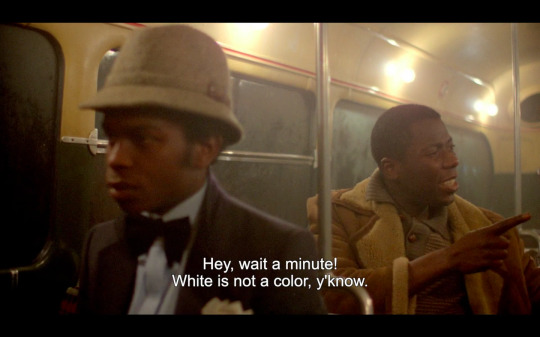
3. White is not a color!
In Franco Rosso’s Babylon, the titular Babylon is—among much mayhem—the cops with the no-knock warrant—the abhorrent clampdown on the sound-system. The guns of Brixton need blazing (or at least a knife to the gut, courtesy of Brinsley Forde). “Racial tension” is only a euphemism for murderous oppression.
4. And upon her forehead was a name written, Mystery, Babylon The Great, The Mother Of Harlots And Abominations Of The Earth. (Revelation 17:5, KJV)
When Mississippi John Hurt sings “Make Me a Pallet on the Floor,” he’s humbling himself—subordinating for the sake of adulterous love. The pallet is on the floor, and it’s soft and low. The sinful sweet-talk, he knows, signals risk: shoot, cut, stab. There’s no tellin’ what she might do. But the Book of Revelation offers an Armageddon glimpse of what she’s capable of. When accounting for behavior, though, who’s really the whore?

5. “So the story goes…”
The pallet is full of pestilence and plague—of lice, roaches, scourges. It doubles as a coffin, or a cooling board. Son House sang of his love “laying on the cooling board” on “Death Letter Blues.” The pain of “her Judgment Day” seemed to rack him, and the “10,000 people…standin’ around the burying ground” felt it, too.
In Steinbeck’s Of Mice and Men, the stable buck Crooks—the sole Black man on the ranch—associates only with the horses he tends to. Crooks’ bunk is a “long box filled with straw, on which his blankets were flung.” He’s segregated from the other workers, surrounded by harnesses and the sound of halter chains. Crooks, whose nickname carries the weight of criminality, “reduce[s] himself to nothing” when a white woman apocalyptically threatens him with a lynching.

6. For the great day of his wrath is come; and who shall be able to stand? (Revelation 6:17, KJV)
Milton William Cooper’s Behold a Pale Horse is, of course, a blessing and a bane. A dog-eared and spine-cracked hood classic on 125th in Harlem. But Wise Intelligent has recognized the limits of it. In its hip-hop adoption, the failures and shortcomings show through. Like on 2000’s “Horsementality,” where Kurupt barks a litany of adverbs including “ultramagnetically,” and it’s on “We Are the Horsemen” that Ced Gee looks beyond God to complain “the universe bothers [him].” You’ve got Canibus’ needlessly excessive 666 wordplay and Kool Keith’s “gamma data” and “galactic horse” super-scientifical madness. ELUCID, though, deals in the concrete, disregards the conspiratorial. He “find[s] the spirit getting lifted,” in a decidedly non-Keith Murray manner. When he beholds the white horse that comes forth conquering, we’re reminded of his anticolonialism, not black helicopters and chemtrails.

7. “In the blink of an eye, the faithful go where they are made whole. / …the dead coming home, prepare a table... / Leave your freshest linens.”
God’ll have you feeling welcome, invited, only to leave you to the cops for violating the Sabbath. He’ll roll up on you like, Wilt thou be made whole? (John 5:6, KJV). Like, Motherfucker, do I look like I want your help? He’ll convince you your disability deserves a miracle, crap on crip culture, and then chastise you about “sin” while he spits ableist fictions.
8. “Singing murder ballads. / Looking for a body.”
Harry Allen, in his eccentric and alchemical liner notes for the Anthology of American Folk Music, pens a summative headline for “Fatal Flower Garden”: “GAUDY WOMAN LURES CHILD FROM PLAYFELLOWS; STABS HIM AS VICTIM DICTATES MESSAGE TO PARENTS.”
There’s a foreboding to, arguably, every Armand Hammer recording—an educated guess, or a warning. (Aw shit!—you got a red dot on your head, too.) The mood is pervasive, like lily-white hands in murder ballads. One can find comfort in this consistency. It’s a proven fact ELUCID is up on that folk tradition shit: He hammers out danger. He hammers out a warning. What the song does is make the killing, the revolution, irresistible.

9. For he must reign, till he hath put all enemies under his feet. (1 Corinthians 15:25, KJV)
What do God’s feet do exactly?
Does He still keep His Timbs on? Does He pirouette spin in a pair of Timbs? Is it haram to show the sole of your shoe?
If you read Corinthians, the feat of God’s feet suggests a more Old Testament-style HIB violator—a brutal and vengeful supreme being on the bully pulpit letting you know what’s what. Or maybe it’s not so wrathful. Maybe God’s feet are just a power move—the aggrandizement of the Godhead at the expense of the masses: “The heaven is my throne, and the earth is my footstool” (Isaiah 66:1, KJV). We’re used to getting stepped on. The back alley boot stomp. We mortify our flesh, self-flagellate. And we keep coming back for more. But why? “God’s Feet” speaks of a return, but it’s more a recidivism.

Images:
The Siege and Destruction of Jerusalem (detail), by David Roberts (1850) | Screenshot from Franco Rosso’s Babylon (1980) | Mississippi John Hurt, Folk Songs And Blues cover art (detail), Piedmont Records (1963) | [Dr. Richard Burr, an embalming surgeon in the Army of the James demonstrating the procedure on a dead soldier] between 1860 and 1865 | Four Horsemen of the Apocalypse (detail), Viktor Vasnetsov (1887) | The Crucifixion, panel from the Isenheim altarpiece (detail), Matthias Grünwald (1515) | Anthology of American Folk Music liner notes (detail), ed. Harry Smith (1952) | Screenshot from Franco Rosso’s Babylon (1980)
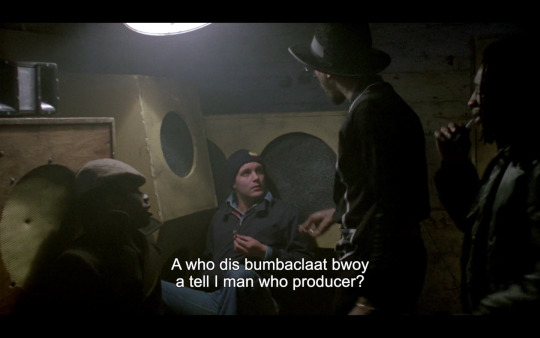
2 notes
·
View notes
Note
Leaf: I would like to learn more about the fae, could you tell me where a good place to start would be? maybe book recommendations? or specific fairy tales to look into? thank you so much
Ah, welcome. It is always good to see those who wish to broaden their knowledge of the old stories.As to the Fae, it depends on what you’re looking for. You see, the Folk did not arise from a singular instance of Mythology, but from an amalgamation of many cultural traditions and stories. For Ireland we have the Tuatha de Danann and their battles against the Fir Bolg and eventually become the Aos Sidhe. There are the Welsh Tylwyth Teg who steal fair haired children from their beds and leave changelings in their place.The Scottish hold great pride in their Seelie and Unseelie courts, while the Scandinavian people whisper fearfully of Trolls, Gnomes, Shapeshifters, Wights, and Werewolves.Will you look to the Norse for stories of Light Elfs, Dwarfs, and Disir? Or to the Germanic Wichtlein who aided miners, and are one of the distant precursors to both the Goblins and Dwarfs we imagine today?Or would you prefer to move forward to the Victorian age where Fae were brought together to diminutive sprites and fanciful little magics that you might find in Peter Pan, A Midsummer Night’s Dream, or the Faerie Queene?It really depends on what you’re trying to find. The Lore of the Fae is vast and encompasses the traditions of many different European cultures, each unique and important in its own way. I can include below a full list of all the sources I happen to possess at this time. Hopefully they will grant your desire of providing an excellent place with which to begin your research.
Kirk, Robert. The Secret Commonwealth of Elves, Fauns, and Fairies. 1691. Reprint, London: D. Nutt, 1893.
Wilby, Emma. “The Witch's Familiar and the Fairy in Early Modern England and Scotland.” Folklore, vol. 111, no. 2, 2000, pp. 283–305. JSTOR, JSTOR, www.jstor.org/stable/1260607.
Vejvoda, Kathleen. “‘Too Much Knowledge of the Other World’: Women and Nineteenth-Century Irish Folktales.” Victorian Literature and Culture, vol. 32, no. 1, 2004, pp. 41–61. JSTOR, JSTOR, www.jstor.org/stable/25058651.
Nutt, Alfred. “Presidential Address. Britain and Folklore.” Folklore, vol. 10, no. 1, 1899, pp. 71–86. JSTOR, JSTOR, www.jstor.org/stable/1253611.
Goodare, Julian. “The Cult of the Seely Wights in Scotland.” Folklore, vol. 123, no. 2, 2012, pp. 198–219., www.jstor.org/stable/41721541.
Briggs, Katharine Mary (1976). "Euphemistic names for fairies". An Encyclopedia of Fairies. New York: Pantheon Books. p. 127. ISBN 0-394-73467-X.
Rossetti, Christina G, and Martin Ware. Goblin Market. London: V. Gollancz, 1980. Print.
Braddon, M. E. (Mary Elizabeth), 1835-1915. Lady Audley's Secret. New York :Federal Book Company, 18ADAD. Print.
Frazer J.G. (1983) Sympathetic Magic. In: The Golden Bough. Palgrave Macmillan, London.
Yeats, William Butler. “The Stolen Child.” Collected Classic Poems, Stevenson to Yeats, Jan. 2012, pp. 1–2. EBSCOhost, ezproxy.uvu.edu/login?url=http://search.ebscohost.com/login.aspx?direct=true&db=prf&AN=76614684&site=eds-live.
Spenser, Edmund, Thomas P. Roche, and C P. O'Donnell. The Faerie Queene. Harmondsworth: Penguin, 1978. Print.
Gregory, Lady, and Finn MacCumhaill. Gods and Fighting Men: The Story of Tuatha de Danann and of the Fianna of Ireland. John Murray, 1905.
Howard, Marvin ElRoy. "" See ya na yon narrow road?": the search for Elfland in folklore of the Scottish border." (1996).
Campbell, John Gregorson. Superstitions of the Highlands & Islands of Scotland. J. MacLehose and sons, 1900.
Diane Purkiss, At The Bottom Of The Garden: A Dark History of Fairies, Hobgoblins, and Other Troublesome Things (2000)
Kready, Laura (1916). A Study of Fairy Tales. Boston: Houghton Mifflin Company.
“Trees in Mythology”. Mythencyclopedia.com. 2007-02-19. Retrieved 2014-05-11.
“‘The king o fairy with his rout’: Fairy Magic in the Literature of Late Medieval Britain–By Hannah Priest”. September 8, 2011.
Lenihan, Eddie and Green, Carolyn Eve (2004) Meeting The Other Crowd: The Fairy Stories of Hidden Ireland. pp. 146–7 ISBN 1-58542-206-1.
https://tam-lin.org/stories/Thomas_the_Rhymer.html
Evans Wentz, W. Y. (1966, 1990) The Fairy-Faith in Celtic Countries. Gerrards Cross, Colin Smythe Humanities Press ISBN 0-901072-51-6
De Jubainville, M. H. D'Arbois and Richard Irvine Best (1903). The Irish Mythological Cycle and Celtic Mythology. Dublin Hodges, Figgis, and Company.
Keightley, Thomas. (1892) Fairy Mythology. London: George Bell & Sons, Retrieved from Project Gutenberg 15 October 2017
King James. Daemonologie. A Critical Edition. In Modern English. 2016. ISBN 1-5329-6891-4.
Williams, Noel. “The semantics of the word fairy: making meaning out of thin air.” The Good People: new fairylore essays (1991): 457-78.
https://britishfairies.wordpress.com/
Wakefield, Sarah R. Folklore in British Literature: Naming and Narrating in Women’s Fiction, 1750-1880. Vol. 80. Peter Lang, 2006.
Laviolette, Patrick, and Alastair McIntosh. “Fairy hills: merging heritage and conservation.” Ecos 18.¾ (1997): 2-8.
Owen, Alex. “'Borderland Forms’: Arthur Conan Doyle, Albion’s Daughters, and the Politics of the Cottingley Fairies.” History Workshop, no. 38, 1994, pp. 48–85.
Zipes, Jack. Victorian Fairy Tales: The Revolt of the Fairies and Elves. Routledge, 2016.
Silver, Carole. “On the Origin of Fairies: Victorians, Romantics, and Folk Belief.” Victorian Literature and Culture 14 (1986): 141-156.
Harms, Daniel M. “Hell and Fairy: The Differentiation of Fairies and Demons Within British Ritual Magic of the Early Modern Period.” Knowing Demons, Knowing Spirits in the Early Modern Period. Palgrave Macmillan, Cham, 2018. 55-77.
Sikes, Wirt. British goblins: Welsh folk-lore, fairy mythology, legends and traditions. S. Low, Marston, Searle & Rivington, 1880.
Loponen, Mika. “Faerie Folklore in Medieval Tales-An Introduction.” (2006).
Lindow, John. Norse mythology: a guide to gods, heroes, rituals, and beliefs. Oxford University Press, 2002.
Gimbel, Jared Joseph. “Spiritual Descent: A Study of Semi-Divine Beings and Non-Human Species in European Mythologies.” (2011).
https://www.gutenberg.org/files/41006/41006-h/41006-h.htm
John Bauers Bästa: Ett Urval Sagor Ur "bland Tomtar Och Troll" Åren 1907-1915. Stockholm: Åhlén & Åkerlund, 1951. Print.
32 notes
·
View notes
Text
Book Challenge 2020 (100 books!!) (I did it!!)
After forgetting to track my reading for three years, I started recording my reading on Tumblr last year again, and I’m committed to continuing that this year!
This year is my final year of my Bachelor’s Degrees (I’m finishing English in June) and I’m planning to do a gap year from September on, so now more university after June (at least as far as 2020 is concerned).
I do not really foresee any issues or obstacles to reading this year, except of course finishing my thesis which will probably take quite some time, so I do expect a decline around April until early June. Although I do have a lot more time off in my gap year, I used to read a lot of mandatory books for my studies, so I don’t know whether having a gap year will mean reading more books. Since I’m not doing any university studying, I am interested in reading academic books by myself, studying by myself. Those books are often longer, denser and just take more time to get through; consequently, I might read fewer books in the same amount of energy and time spent reading.
To make a (somewhat) long story short: my expectations are in line with the amount of books I’ve read in the last years, so I’m expecting to read 75 books this year!
Update: it’s mid-October and I’ve already read 99 books this year, so I’ve finished my original goal of 75 books! Now I’m going for 100 books (which should be easy to do, and after that we’ll just see how it goes!).
The crossed book is the one I’m currently reading, I’ve written reviews for books that have a (x) behind them, with the (x) being a link to my Goodreads review!
Update: Today (November 23) I’ve read 114 books so I’ve finished my challenge of 100 books! Right now, I’m still 25 books ahead schedule! Let’s see if I can keep that energy up!
January
The Fire Next Time - James Baldwin (5/5) (x)
Serpent and Dove (Serpent and Dove #1) - Shelby Mahurin (4/5) (x)
Lethal White (Cormoran Strike #4) - Robert Galbraith (4/5)
Weirdos from Another Planet (Calvin and Hobbes #4) - Bill Watterson) (5/5)
Selected Poems - E.E. Cummings (5/5) (x)
Niets zal ons redden maar een beetje liefde is oké - Henk van Straten (Dutch) (4/5) (x)
, said the shotgun to the head. - Saul Williams (4/5)
Loud and Yellow Laughter - Sindiswa Busuku-Mathese (3/5)
Fireborn (The Aurelian Cycle #1) - Rosaria Munda (4/5)
Sylvia Plath Poems Chosen by Carol Ann Duffy - Sylvia Plath (4/5) (x)
The Comedy of Errors - William Shakespeare (3/5) (x)
Nieuwe Herinneringen - Remco Campert (Dutch) (2/5)
Dido, Queen of Carthage - Christopher Marlowe (3/5)
The Seven Husbands of Evelyn Hugo - Taylor Jenkins Reid (4/5)
Alles wat er was - Stine Jensen (Dutch) (3/5)
Zij in de geschiedenis - Alies Pegtel (Dutch) (4/5) (x)
Good Omens - Neil Gaiman and Terry Pratchett (reread) (5/5)
February
Prometheus Bound - Aeschylus (3/5)
The Lost Hero (The Heroes of Olympus #1) - Rick Riordan (reread) (4/5)
The Son of Neptune (The Heroes of Olympus #2) - Rick Riordan (reread) (4/5)
So You Want to Talk About Race - Ijeoma Oluo (4/5)
The Mark of Athena (The Heroes of Olympus #3) - Rick Riordan (reread) (4/5)
Educated - Tara Westover (3/5)
Prometheus on Caucasus - Lucian of Samosata (3/5)
March
Reading Old English: A Primer and First Reader - Robert Hasenfratz (4/5) (x)
Still Foolin’ ‘Em: Where I’ve Been, Where I’m Going, and Where the Hell Are My Keys? - Billy Crystal (3/5)
The House of Hades (The Heroes of Olympus #4) - Rick Riordan (reread) (4/5)
Quick Question: New Poems - John Ashberry (1/5) (x)
Exploring the Language of Poems, Plays and Prose - Michael H. Short (3/5) (x)
The Call of the Wild - Jack London (2/5) (x)
The Blood of Olympus (The Heroes of Olympus #5) - Rick Riordan (reread) (4/5)
April
The Waste Land - T.S. Eliot (reread) (5/5)
And Still I Rise - Maya Angelou (4/5)
Poëzie in Utrechtse Muren - Ingmar Heytze (Dutch) (5/5) (x)
To the Lighthouse - Virginia Woolf (4/5)
Mijn dood en ik - Remco Campert (4/5)
Ecology of Fear: Los Angeles and the Imagination of Disaster - Mike Davis (3/5)
Native Son - Richard Wright (2/5)
Dido, Queen of Carthage - Christopher Marlowe (reread) (4/5)
May
The Plague - Albert Camus (4/5)
Absalom! Absalom! - William Faulkner (4/5)
Modernism’s Mythic Pose: Gender, Genre, Solo Performance - Carrie J. Preston (2/5)
James Joyce and Sexuality - Richard Brown (3/5)
June
Daisy Jones & the Six - Taylor Jenkins Reid (4/5) (x)
Modernism, Sex and Gender - Alison Pease and Celia Marshik (3/5)
The Burial at Thebes: Sophocles’ Antigone - Seamus Heaney (4/5)
The Host - Stephanie Meyer (reread) (4/5)
The Hunger Games (The Hunger Games #1) - Suzanne Collins (reread) (4/5)
Catching Fire (The Hunger Games #2) - Suzanne Collins (reread) (4/5) (x)
A Terrible Beauty is Born - W.B. Yeats (4/5)
Mockingjay (The Hunger Games #3) - Suzanne Collins (reread) (4/5)
White Fragility: Why It’s So Hard for White People to Talk About Racism - Robin DiAngelo (4/5)
Are Prisons Obsolete? - Angela Y. Davis (4/5)
The Final Empire (Mistborn #1) - Brandon Sanderson (4/5)
Everything Leads to You - Nina LaCour (2/5) (x)
The Tempest - William Shakespeare (reread) (3/5)
July
Hag-Seed - Margaret Atwood (4/5) (x)
American Slavery (A Very Short Introduction) - Andrea Heather William (reread) (3/5)
Angels & Demons (Robert Langdom #1) - Dan Brown (4/5) (x)
Mythos: A Retelling of Myths of Ancient Greece - Stephen Fry (4/5) (x)
Mean Time - Carol Ann Duffy (3/5)
Lijfrente - Vrouwkje Tuinman (Dutch) (4/5)
The Ballad of Songbirds and Snakes (The Hunger Games #0) - Suzanne Collins (3/5) (x)
Sonnets from the Portuguese - Elizabeth Barrett Browning (3/5)
A Room of One’s Own - Virginia Woolf (reread) (5/5)
The Lovely Bones - Alice Sebold (4/5)
Onbreekbaar - Hans Hagen (Dutch) (1/5) (x)
The Penelopiad - Margaret Atwoord (reread) (4/5)
The Importance of Being Ernest - Oscar Wilde (5/5)
Het goede leven: een briefwisseling - Piet Gerbrandy & Andreas Kinneging (Dutch) (2/5) (x)
Constructions of the Classical Body - James Porter (3/5)
August
The Complete Poems - Anne Sexton (4/5)
The Kissing Booth (The Kissing Booth #1) - Beth Reekles (2/5) (x)
The Daily Show: The Book - Chris Smith (4/5) (x)
The Duchess Deal (Girl meets Duke #1) - Tessa Dare (3/5)
Between the World and Me - Ta-Nehesi Coates (4/5)
Fragments - Heraclitus (transl. by Brooks Haxton) (2/5) (x)
Animal Farm - George Orwell (reread) (5/5)
The Hidden Oracle (The Trials of Apollo #1) - Rick Riordan (reread) (4/5)
The Gentleman’s Guide to Vice and Virtue (Montague Siblings #1) - Mackenzi Lee (reread) (4/5)
Kitchen - Banana Yoshimoto (4/5)
Catilina’s Riddle (Roma sub Rosa #3) - Steven Saylor (2/5) (x)
When Dimple met Rishi (Dimple and Rishi #1) - Sandhya Memon (1/5) (x)
Adulthood is a Myth (Sarah’s Scribbles #1) - Sarah Andersen (4/5)
September
Normal People - Sally Rooney (3/5) (x)
Not All Dead White Men: Classics and Misogyny in the Digital Age - Donna Zuckerberg (4/5)
Sadie: A Novel - Courtney Summers (4/5)
The Myth of Sisyphus - Albert Camus (4/5)
Vloedlijnen - Piet Gerbrandy (Dutch) (4/5)
Red, White and Royal Blue - Casey McQuiston (reread) (4/5)
This is Going to Hurt: Secret Diaries of a Junior Doctor - Adam Kay (4/5)
Envelope Poems - Emily Dickinson (4/5) (x)
A Murder on the Orient Express (Hercule Poirot #10) - Agatha Christie (3/5) (x)
A Portrait of the Artist as a Young Man - James Joyce (4/5)
October
Titus Andronicus - William Shakespeare (4/5) (x)
The Mysterious Affair at Styles (Hercule Poirot #1) - Agatha Christie (4/5) (x)
Het verhaal van Aeneas - Vergilius (trans. to Dutch) (reread) (4/5)
If Beale Street Could Talk - James Baldwin (2/5)
Lesbia, Verzen van Liefde en Spot - Catullus (Dutch) (transl. by Paul Claes) (4/5) (x)
The Nightingale - Kristin Hannah (4/5) (x)
The Cat Inside - William S. Burroughs (reread) (5/5)
The Murder on the Links (Hercule Poirot #2) - Agatha Christie (3/5)
November
Such a Fun Age - Kiley Reid (3/5) (x)
Narratology and Classics: a Practical Guide - Irene de Jong (3/5) (x)
The Murder of Roger Akroyd (Hercule Poirot #4) - Agatha Christie (4/5) (x)
The ABC Murders (Hercule Poirot #11) - Agatha Christie (4/5)
The Great Cat (Poetry Collection) - ed. by Emily Fragos (3/5) (x)
Weapons of Math Destruction - Cathy O’Neil (4/5)
The Northern Lights (His Dark Materials #1) - Philip Pullman (4/5)
Vincent van Gogh en zijn brieven - Leo Jansen (Dutch) (3/5)
My Dark Vanessa - Kate Elizabeth Russell (4/5)
The Fill-In Boyfriend - Kasie West (reread) (4/5)
Poirot Investigates (Hercule Poirot #3) - Agatha Christie (1/5)
My 2019 challenge
My 2016 challenge
My 2015 challenge
My 2014 challenge
My 2013 challenge
14 notes
·
View notes
Photo
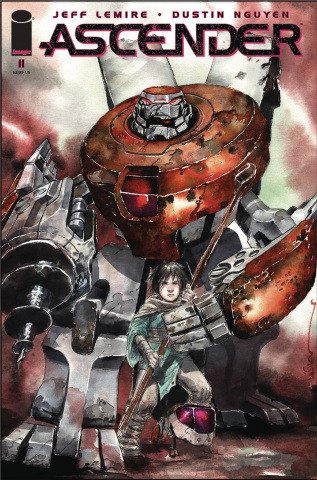
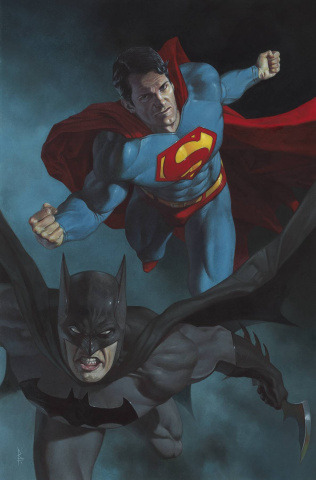
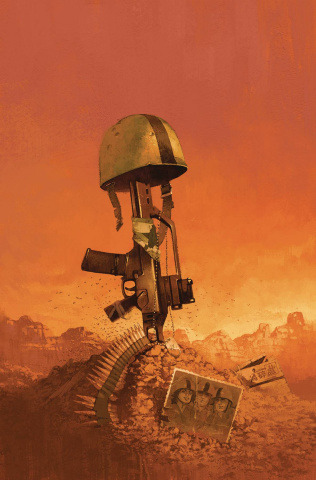
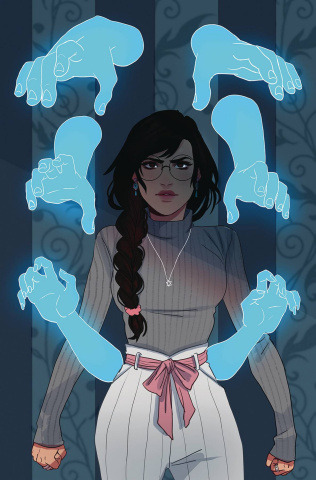
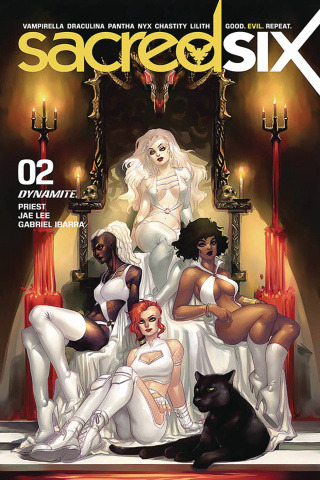
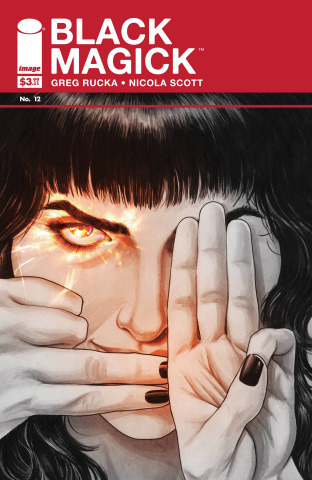
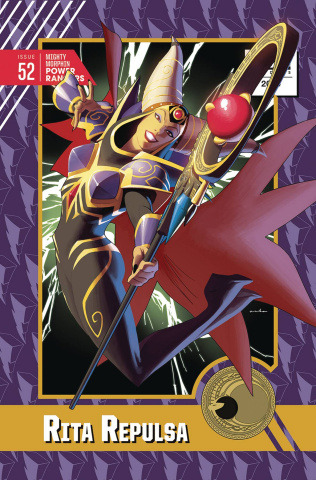

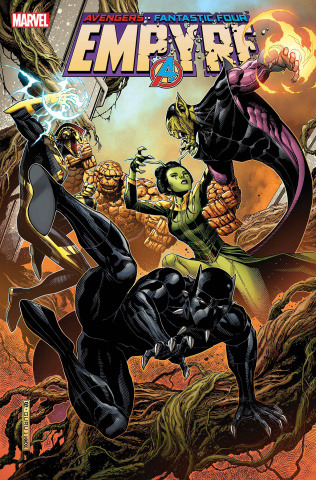
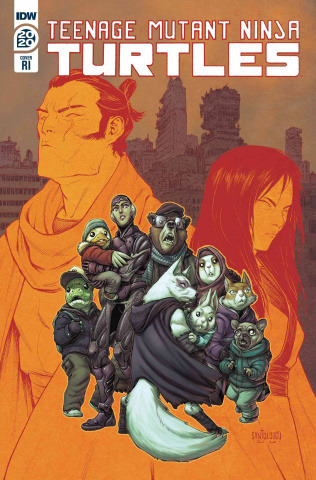
CC Blogger - New Arrivals @ Collectors Corner : Wednesday 7/29/20 Collectors Corner Parkville - HQ : OPEN for IN STORE SHOPPING with Strong Safety Measures in Place (Hand Sanitizing Stations, Masks Required for All, Social Distancing Required, Limited Capacity, CURBSIDE Pick Up Optional) - According to Baltimore County Guidelines. 1-410-668-3353. CC Parkville - NEW 2020 STORE HOURS, Sunday 12-6, Mon-Tues 12-7, Wed 9-8, Thurs 11-7, Friday & Saturday 11-8 Collectors Corner - Bel Air Outpost Location : OPEN for IN STORE SHOPPING with Strong Safety Measures in Place (Hand Sanitizing Stations, Masks Required for All, Social Distancing Required, Limited Capacity, CURBSIDE Pick Up Optional) - According to Harford County Guidelines. 1-410-838-1777. CC Bel Air -NEW 2020 STORE HOURS, Sunday 11-5, Monday/Tuesday - Closed, Wednesday 11-8, Thursday 11-7, Friday/Saturday 11-8 Complete list of items shipping to the stores, some items may be limited in availability. If you see anything you want to purchase on the list and are not a subscription member at Collectors Corner, just contact us and let us know if you want an item held at the stores. email - collectorscornermd@comcast.net Subscription Membership & Free Membership Card : Collectors Corner's No Obligation (FREE) Membership Card or FREE (In Store) & ONLINE Subscription Membership saves you 10% Off ALL Bagged & Boarded Comic Book Back Issues, Board Games, Graphic Novels, Manga & Special Orders. Plus Never miss a comic again! Computerized and organized + you can add and cancel titles on your subscription list from home on your own time, or in the store when you pick up your comics at : Maryland's Coolest Stores! Since 2001. 2 Super Cool & Convenient Locations - CC PARKVILLE - HEADQUARTERS 7911 Harford Rd Parkville, MD 21234 & CC BEL AIR - OUTPOST 17 N. Main St. Bel Air, MD 21014 www.collectorscornermd.com PUBLISHER/TITLE/PRICE AFTERSHOCK COMICS Dark Ark After The Flood #5, $3.99 Godkillers #4, $3.99 AHOY COMICS Ash And Thorn #3, $3.99 ARCHIE COMIC PUBLICATIONS Archie #713 (Archie & Katy Keene Part 4)(Cover A Laura Braga), $3.99 Archie #713 (Archie & Katy Keene Part 4)(Cover B Andrew Pepoy), $3.99 Archie #713 (Archie & Katy Keene Part 4)(Cover C Paul Renaud), $3.99 Archie Blue Ribbon Presents (FCBD 2020 Edition), AR Archie Milestones Digest #9, $7.99 Archie Showcase Digest #1 (Archie), $7.99 BOOM! STUDIOS Bill And Ted Omnibus TP, $29.99 Firefly #18 (Cover A Marc Aspinall), $3.99 Firefly #18 (Cover B George Kambadais), $3.99 Firefly #18 (Cover C Ingo Romling), AR Ghosted In L.A. #11 (Of 12)(Cover A Siobhan Keenan), $3.99 Ghosted In L.A. #11 (Of 12)(Cover B Sina Grace), $3.99 Giant Days Volume 13 TP, $14.99 Mighty Morphin Power Rangers #52 (Cover A Jamal Campbell), $3.99 Mighty Morphin Power Rangers #52 (Cover B Goni Montes Foil Wraparound Variant), $4.99 Mighty Morphin Power Rangers #52 (Cover C Kris Anka), AR Mighty Morphin Power Rangers #52 (Cover D Jamal Campbell), AR Ronin Island Volume 2 TP, $14.99 Wonder Pony GN, $9.99 CINESTATE FANGORIA Fangoria Volume 2 #8, $19.79 COMIC SHOP NEWS Comic Shop News #1719, AR DARK HORSE COMICS Critical Role Vox Machina Origins Volume 2 TP, $19.99 Cuphead Volume 1 Comic Capers And Curios TP, $10.99 Disney Mulan The Story Of The Movie In Comics HC, $10.99 Disney PIXAR Onward Tales Of The Manticore TP, $10.99 Plants Vs Zombies Volume 16 The Garden Path HC, $10.99 Stranger Things The Bully TP (Young Adult), $12.99 Stranger Things Volume 3 Into The Fire TP, $19.99 Stranger Things/Minecraft (FCBD 2020 Edition), AR World Of Cyberpunk 2077 HC, $39.99 World Of Cyberpunk 2077 HC (Deluxe Edition), $99.99 DC COMICS Batman Overdrive/Batman Tales Once Upon A Crime Flipbook (FCBD 2020 Edition), AR Batman Superman #10 (Cover A Clayton Henry), $3.99 Batman Superman #10 (Cover B Riccardo Federici Card Stock Variant), AR Batman The Deluxe Edition Volume 5 HC, $34.99 DC Cybernetic Summer #1, $9.99 Deathstroke R.I.P. TP, $16.99 John Constantine Hellblazer #8, $3.99 Legion Of Super-Heroes #7 (Cover A Ryan Sook), $3.99 Legion Of Super-Heroes #7 (Cover B Alex Garner Card Stock Variant), AR Legion Of Super-Heroes #7 (Cover C Ryan Sook Gold Lantern Card Stock Variant), AR Lucifer Volume 3 The Wild Hunt TP, $16.99 Plunge #5 (Of 6)(Cover A Jeremy Wilson), $3.99 Plunge #5 (Of 6)(Cover B Gary Frank), AR Red Hood Outlaw #47 (Cover A Paolo Pantalena), $3.99 Red Hood Outlaw #47 (Cover B Philip Tan), AR Suicide Squad #7 (Cover A Daniel Sampere & Juan Albarran), $3.99 Suicide Squad #7 (Cover B Jeremy P. Roberts), AR Wonder Woman #759 (Cover A David Marquez), $3.99 Wonder Woman #759 (Cover B Jim Lee Card Stock Variant), AR Wonder Woman Come Back To Me TP, $16.99 Wonder Woman The War Of The Gods Omnibus HC, $99.99 DYNAMITE ENTERTAINMENT Boys #1 (FCBD 2020 Edition), AR Boys Dear Becky #3 (Cover A Darick Robertson), $3.99 Boys Dear Becky #3 (Cover B Darick Robertson Pencil Variant), AR Boys Dear Becky #3 (Cover C Darick Robertson Virgin Variant), AR Crackdown TP, $17.99 James Bond #6 (Cover A Afua Richardson), $3.99 James Bond #6 (Cover B Afua Richardson Black & White Variant), AR Red Sonja And Vampirella Meet Betty And Veronica #12 (Of 12)(Cover A Fay Dalton), $3.99 Red Sonja And Vampirella Meet Betty And Veronica #12 (Of 12)(Cover B Robert Hack), $3.99 Red Sonja And Vampirella Meet Betty And Veronica #12 (Of 12)(Cover C Laura Braga), $3.99 Red Sonja And Vampirella Meet Betty And Veronica #12 (Of 12)(Cover D Dan Parent), $3.99 Red Sonja And Vampirella Meet Betty And Veronica #12 (Of 12)(Cover E Cat Staggs), $3.99 Vampirella Red Sonja #9 (Cover A Jae Lee), $3.99 Vampirella Red Sonja #9 (Cover B Mayara Sampaio), $3.99 Vampirella Red Sonja #9 (Cover C Leonardo Romero), $3.99 Vampirella Red Sonja #9 (Cover D Athena Rose Cosplay Variant), $3.99 Vampirella Red Sonja #9 (Cover E Drew Moss), $3.99 Vampirella Red Sonja #9 (Cover F Roberto Castro Bonus Variant), AR FIRST SECOND Adventure Zone Volume 3 Petals To The Metal GN, $19.99 Adventure Zone Volume 3 Petals To The Metal HC, $27.99 GRAPHIX Baby-Sitters Little Sister Volume 2 Karen's Roller Skates GN, $10.99 Baby-Sitters Little Sister Volume 2 Karen's Roller Skates HC, $22.99 HORRORHOUND HorrorHound #83, $6.99 IDW PUBLISHING Kill Lock #6 (Of 6)(Cover A Livio Ramondelli), $3.99 Marvel Action Spider-Man Volume 2 #3 (Cover A Fico Ossio), $3.99 Marvel Action Spider-Man Volume 2 #3 (Cover B Sanford Greene), AR Panda Roja y Oso Lunar TP (Red Panda And Moon Bear TP Spanish Edition), $14.99 Pandemica #5 (Of 5)(Cover A Alex Sanchez), $3.99 Pandemica #5 (Of 5)(Cover B Alex Sanchez Black & White Variant), AR Sleeping Beauties #2 (Of 10)(Cover A Annie Wu), $3.99 Sleeping Beauties #2 (Of 10)(Cover B Jenn Woodall), $3.99 Sleeping Beauties #2 (Of 10)(Cover C Jana Heidersdorf), AR Teenage Mutant Ninja Turtles #107 (Cover A Nelson Daniel), $3.99 Teenage Mutant Ninja Turtles #107 (Cover B Kevin Eastman), $3.99 Teenage Mutant Ninja Turtles #107 (Cover C Alex McArdell), AR Teenage Mutant Ninja Turtles Annual 2020 (Cover A Adam Gorham), $5.99 Teenage Mutant Ninja Turtles Annual 2020 (Cover B Kevin Eastman), $5.99 Teenage Mutant Ninja Turtles Annual 2020 (Cover C Mateus Sanolouco), AR Usagi Yojimbo Color Classics #5 (Of 7)(Cover A Stan Sakai), $3.99 IMAGE COMICS Ascender #11, $3.99 Black Magick #12, $3.99 Dead Body Road Bad Blood #2 (Of 6), $3.99 Die #11 (Stephanie Hans 2nd Printing Variant Cover), $3.99 Hardcore Volume 2 Reloaded TP, $14.99 Heart Attack Volume 1 Against The Wall TP, $16.99 Hedra #1 (One Shot), $5.99 Lost Soldiers #1 (Of 5), $3.99 Ludocrats #2 (Of 5)(Jeff Stokely 2nd Printing Variant Cover), $3.99 Mirka Andolfo's Mercy #4 (Of 6)(Cover A Mirka Andolfo), $3.99 Mirka Andolfo's Mercy #4 (Of 6)(Cover B Giuseppe Camuncoli), $3.99 Nailbiter Returns #3, $3.99 Pulp HC, $16.99 Spawn #308 (Cover A Todd McFarlane), $2.99 Spawn #308 (Cover B Ken Lashley), $2.99 Spawn #308 (Cover C Francesco Mattina), $2.99 Spawn Vengeance TP, $16.99 That Texas Blood #2 (Cover A Jacob Phillips), $3.99 That Texas Blood #2 (Cover B Duncan Fegredo), $3.99 Walking Dead The Alien HC, $19.99 Witchblade #1 (25th Anniversary Edition), $4.99 MAD CAVE STUDIOS Savage Bastards #4 (Of 5), $3.99 MARVEL COMICS Adventure Into Fear Omnibus HC, $150.00 Amazing Spider-Man #45 (Cover A Josemaria Casanovas), $4.99 Amazing Spider-Man #45 (Cover B Mark Bagley), AR Avengers Epic Collection Volume 5 This Beachhead Earth TP, $39.99 Avengers Live Kree Or Die TP, $24.99 Cable #2 (Cover A Phil Noto), $3.99 Cable #2 (Cover B Ariel Olivetti), AR Cable #2 (Cover C David Yardin Marvel Zombies Variant), AR Captain Marvel #18 (Cover A Jorge Molina), $3.99 Captain Marvel #18 (Cover B Dan Mora Empyre Variant), AR Empyre #3 (Of 6)(Cover A Jim Cheung), $4.99 Empyre #3 (Of 6)(Cover B Alexander Lozano Avengers Variant), AR Empyre #3 (Of 6)(Cover C Michael Cho Fantastic Four Variant), AR Empyre #3 (Of 6)(Cover D Tony S. Daniel Kree Skrull Variant), AR Empyre #3 (Of 6)(Cover E Ed McGuinness), AR Empyre #3 (Of 6)(Cover F John Tyler Christopher 2-Pack Action Figure Variant), AR Empyre #3 (Of 6)(Cover G TBD Secret Variant), AR Empyre #3 (Of 6)(John Tyler Christopher 2nd Printing Variant Cover), $4.99 Empyre Captain America #1 (Of 3)(Cover A Mike Henderson), $3.99 Empyre Captain America #1 (Of 3)(Cover B Steve Epting), AR Empyre Savage Avengers #1 (Cover A Greg Smallwood), $4.99 Empyre Savage Avengers #1 (Cover B Gerardo Sandoval), AR Iron Man 2020 #5 (Of 6)(Cover A Pete Woods 5th Color Fluorescent Ink Variant), $4.99 Iron Man 2020 #5 (Of 6)(Cover B Mico Suayan Variant), AR Iron Man 2020 #5 (Of 6)(Cover C Simone Bianchi Connecting Variant), AR Iron Man 2020 #5 (Of 6)(Cover D Ron Lim Variant), AR Iron Man 2020 #5 (Of 6)(Cover E Superlog Heads Variant), AR Marvel Masterworks Marvel Team-Up Volume 5 HC (Book Market Edition), $75.00 Marvel Masterworks Marvel Team-Up Volume 5 HC (Direct Market Variant Edition Volume 291), $75.00 Marvel Previews Volume 5 #2 (August 2020), $1.25 Marvel-Verse Captain America TP, $9.99 Ms. Marvel Meets The Marvel Universe TP, $12.99 Silver Surfer Parable TP (New Printing), $14.99 Spider-Man Noir #2 (Of 5)(Cover A Dave Rapoza), $3.99 Spider-Man Noir #2 (Of 5)(Cover B Dan Panosian), AR Spider-Verse Spider-Zero TP, $17.99 Star Wars Darth Vader #3 (Cover A In-Hyuk Lee), $3.99 Star Wars Darth Vader #3 (Cover B Aaron Kuder), AR Star Wars Darth Vader #3 (Cover C Chris Sprouse Empire Strikes Back Variant), AR Star Wars The Rise Of Kylo Ren TP, $15.99 Symbiote Spider-Man Alien Reality #5 (Of 5)(Cover A Greg Land), $3.99 Symbiote Spider-Man Alien Reality #5 (Of 5)(Cover B Alex Saviuk), AR Symbiote Spider-Man Alien Reality #5 (Of 5)(Cover C Ron Lim), AR Thor #5 (Nic Klein 2nd Printing Variant Cover), $3.99 X-Factor #1 (Cover A Ivan Shavrin), $4.99 X-Factor #1 (Cover B Otto Schmidt), AR X-Factor #1 (Cover C Larry Stroman Hidden Gem Variant), AR X-Factor #1 (Cover D Emanuela Lupacchino Marvel Zombies Variant), AR X-Factor #1 (Cover E David Baldeon), AR X-Factor #1 (Cover F Tom Muller Design Variant), AR X-Factor #1 (Cover G Yellow Variant), AR X-Men #10 (Cover A Leinil Francis Yu), $3.99 X-Men #10 (Cover B Ryan Brown Marvel Zombies Variant), AR X-Men #10 (Cover C Phil Noto Empyre Variant), AR X-Men #10 (Cover D Patrick Zircher Confrontation Variant), AR ONI PRESS Peng Action Sports Adventures GN, $14.99 Rogue Planet #3, $3.99 Shadow Roads #9, $3.99 SCHOLASTIC Spooky Tale Of Captain Underpants Comic Reader Volume 1 The Horrifingly Haunted Hack-A-Ween SC, $5.99 Archie Horror Novel Volume 2 Interview With The Vixen SC, $9.99 Daphne And Velma Novel Volume 2 The Dark Deception SC, $9.99 Half Past Peculiar Hybrid Novel Volume1 Finders Creepers SC, $14.99 SCOUT COMICS Canopus #1 (Dave Chisholm 2nd Printing Variant Cover), $3.99 Grit #1, $3.99 White Ash #5, $3.99 TITAN COMICS Blade Runner 2019 #8 (Cover A Jesus Hervas), $3.99 Blade Runner 2019 #8 (Cover B Syd Mead), $3.99 Blade Runner 2019 #8 (Cover C Andres Guinaldo), $3.99 TOKYOPOP Disney Manga The Nightmare Before Christmas Zero's Journey Volume 4 TP, $15.99 There Are Things I Can't Tell You GN, $14.99 VALIANT ENTERTAINMENT Doctor Tomorrow #4 (Of 5)(Cover A Kenneth Rocafort), $3.99 Doctor Tomorrow #4 (Of 5)(Cover B David Lafuente), $3.99 Doctor Tomorrow #4 (Of 5)(Cover C Cully Hamner Pre-Order Edition Variant), AR VAULT COMICS Black Stars Above Volume 1 TP, $17.99 Bleed Them Dry #2 (Cover A Dike Ruan), $3.99 Bleed Them Dry #2 (Cover B Adam Gorham), $3.99 Heathen #11, $3.99 WARRANT PUBLISHING COMPANY Creeps #26, $5.95 ZENESCOPE ENTERTAINMENT Grimm Fairy Tales #39 (Cover A Canaan White), $3.99 Grimm Fairy Tales #39 (Cover B Julius Abrera), $3.99 Grimm Fairy Tales #39 (Cover C John Royle), $3.99 Grimm Fairy Tales #39 (Cover D Derlis Santa Cruz), $3.99 Robyn Hood Justice #1 (Cover A Igor Vitorino), $3.99 Robyn Hood Justice #1 (Cover B Harvey Tolibao), $3.99 Robyn Hood Justice #1 (Cover C Josh Burns), $3.99 Robyn Hood Justice #1 (Cover D Keith Garvey), $3.99 Robyn Hood Justice #1 (Cover E Leonardo Colapietro), $3.99 Robyn Hood Justice #1 (Cover F Blank Variant), $10.00 TOYS - T-SHIRTS & COLLECTIBLES Mobile Suit Gundam Internal Structure RX-78-2 Gundam Weapon Figure V1, AR Mobile Suit Gundam Internal Structure RX-78-2 Gundam Weapon Figure V2, AR
2 notes
·
View notes
Text
BALIOC’S READING LIST, 2019 EDITION
This list counts only published books, consumed in published-book format, that I read for the first time and finished. No rereads, nothing abandoned halfway through, no Internet detritus of any kind, etc. Also no children’s picture books.
1. In a Time of Treason, David Keck
2. A King In Cobwebs, David Keck
3. War In Human Civilization, Azar Gat
4. The Kingdom of Copper, S. A. Chakraborty
5. The Impossibility of Religious Freedom, Winifred Fallers Sullivan
6. The Winter of the Witch, Katherine Arden
7. Out of the Silent Planet, C. S. Lewis
8. Perelandra, C. S. Lewis
9. The Great Divorce, C. S. Lewis
10. Underlord, Will Wight
11. The Devil-Wives of Li Fong, E. Hoffman Price
12. How to Hide an Empire: The History of the Greater United States, Daniel Immerwahr
13. The Raven Tower, Ann Leckie
14. The Rage of Dragons, Evan Winter
15. The Bird King, G. Willow Wilson
16. A Betrayal In Winter, Daniel Abraham
17. An Autumn War, Daniel Abraham
18. The Price of Spring, Daniel Abraham
19. Chartism, Thomas Carlyle
20. Impro: Improvisation and the Theater, Keith Johnstone
21. A Memory Called Empire, Arkady Martine
22. Foundryside, Robert Jackson Bennett
23. Against the Grain: A Deep History of the Earliest Stats, James C. Scott
24. The Ruin of Kings, Jenn Lyons
25. Ship of Smoke and Steel, Django Wexler
26. Pan, Knut Hamsun
27. The Unbound Empire, Melissa Caruso
28. The Coddling of the American Mind: How Good Intentions and Bad Ideas Are Setting Up a Generation For Failure, Greg Lukianoff & Jonathan Haidt
29. Empire of Sand, Tasha Suri
30. Imagined Communities, Benedict Anderson
31. A Brightness Long Ago, Guy Gavriel Kay
32. The Riddle-Master of Hed, Patricia McKillip
33. Heir of Sea and Fire, Patricia McKillip
34. Harpist In the Wind, Patricia McKillip
35. Identity: The Demand for Dignity and the Politics of Resentment, Francis Fukuyama
36. Every Heart a Doorway, Seanan McGuire
37. The Witchwood Crown, Tad Williams
38. Empire of Grass, Tad Williams
39. Ten Restaurants That Changed America, Paul Freedman
40. The Priory of the Orange Tree, Samantha Shannon
41. The Dictator's Handbook: Why Bad Behavior is Almost Always Good Politics, Bruce Bueno de Mesquita & Alastair Smith
42. Wyrms, Orson Scott Card
43. Seedfolks, Paul Fleischman
44. The Axe and the Throne, M. D. Ireman
45. The Sun King, Nancy Mitford
46. The Demons of King Solomon, various (ed. Aaron J. French)
47. Towards a New Socialism, W. Paul Cockshott & Allin F. Cottrell
48. The Oracle Glass, Judith Merkle Riley
49. The Orphans of Raspay, Lois McMaster Bujold
50. Blood Meridian, or, the Evening Redness In the West, Cormac McCarthy
51. Lent, Jo Walton
52. Empress of Forever, Max Gladstone
53. Born a Crime: Stories From a South African Childhood, Trevor Noah
54. The Intuitionist, Colson Whitehead
55. The People's Republic of Walmart: How the World's Biggest Corporations are Laying the Foundation for Socialism, Leigh Phillips & Michal Rozworski
56. Turning Darkness Into Light, Marie Brennan
57. The Thousand Autumns of Jacob de Zoet, David Mitchell
58. The Initiate Brother, Sean Russell
59. Gatherer of Clouds, Sean Russell
60. Primal Screams: How the Sexual Revolution Created Identity Politics, Mary Eberstadt
61. The New Achilles, Christian Cameron
62. World Without End, Sean Russell
63. Sea Without a Shore, Sean Russell
64. Uncrowned, Will Wight
65. A Brief History of Indonesia: Sultans, Spices, and Tsunamis: The Incredible Story of Southeast Asia's Largest Nation, Tim Hannigan
66. The Vagrant, Peter Newman
67. Jade War, Fonda Lee
68. The Affluent Society, John Kenneth Galbraith
69. The Hod King, Josiah Bancroft
70. The Name of All Things, Jenn Lyons
71. Cold Iron, Miles Cameron [Christian Cameron]
72. Dark Forge, Miles Cameron [Christian Cameron]
73. Emily of New Moon, Lucy Maude Montgomery
74. Operation Mincemeat: How a Dead Man and a Bizarre Plan Fooled the Nazis and Assured an Allied Victory, Ben Mcintyre
75. The Ten Thousand Doors of January, Alix E. Harrow
76. Feathered Serpent, Dark Heart of Sky: Myths of Mexico, David Bowles
77. Flowers In the Mirror, Li Ruzhen
78. Bright Steel, Miles Cameron [Christian Cameron]
79. On Killing: The Psychological Cost of Learning to Kill in War and Society, Dave Grossman
80. That Hideous Strength, C. S. Lewis
***********
Plausible works of improving nonfiction consumed in 2019: 19
Works consumed in 2019 by women: 24
Works consumed in 2019 by men: 55
Works consumed in 2018 by both men and women: 1
Balioc’s Choice Award, fiction division: Lent
>>>> Honorable mention: A Betrayal in Winter et al
Balioc’s Choice Award, nonfiction division: Impro: Improvisation and the Theatre
>>>> Honorable mention: War In Human Civilization
Cultural Heritage Award For “Holy Crap This Will Fuck You Up”: The Great Divorce
Cultural Heritage Award For “This Will Not Fuck You Up Nearly as Much as the Author Thinks It Will, or Maybe I Was Just In a Cranky Un-Receptive Frame of Mind”: That Hideous Strength
**********
A year of progress, I think. This is probably About Enough Reading. More nonfiction than before, although not enough (and too many things that I wanted to be Really Enlightening turned out to be duds). More literary classics too. A lot of modern genre fiction that was pretty-good-but-definitely-not-great.
15 notes
·
View notes
Text
Movies of 2020 - My Pre-Summer Favourites (Part 1)
The Runners-Up:
20. DISAPPEARANCE AT CLIFTON HILL – first up is this sneaky little psychological mystery thriller from writer-director Albert Shin (In Her Place), a semi-autobiographical piece inspired by his own childhood experiences at his family’s motel at Niagara Falls. Sense8 star Tuppence Middleton delivers magnificently as a troubled young woman whose long-buried memories of witnessing a child-abduction in the area are stirred up following her mother’s death, while Shin weaves a palpable atmosphere of dread and doubt as the twisted narrative confounds our expectations.
19. BEASTIE BOYS STORY – Spike Jonze, undeniably one of Hollywood’s most outside-the-box directors, is the perfect choice to tell the story of one of music’s most live-wire bands (he did, after all, helm their greatest music video, the incendiary Sabotage). Unfortunately, MCA died in 2012, but Mike D and Ad-Rock are on-hand to remember their best friend during this endlessly fascinating live-recorded stage-show in which they recount their tale with the aid of Jonze’s quirkily edited montage of archive footage and crappy animations.
18. THE RHYTHM SECTION – Blake Lively follows in the footsteps of Charlize Theron and Nicole Kidman to reinvent herself as a kickass action heroine in this dark and edgy revenge thriller from rising star female director Reed Morano (Meadowland, TV’s The Handmaid’s Tale), but she does things a little differently, portraying an instantly relatable, refreshingly vulnerable amateur warrior who enlists the help of Jude Law’s disgraced MI6 spook to train her to kill after her whole family die in a terrorist attack.
17. BOMBSHELL – the #MeToo movement gets its strongest cinematic ammunition to date with this challenging true-life drama chronicling the very public fall of media mogul Roger Ailes (portrayed with loathsome brilliance by John Lithgow) and the beleaguered women from Fox News who brought him down (represented here by the spectacular triumvirate of Charlize Theron, Nicole Kidman and Margot Robbie). It’s hard to watch at times, but that’s the point, and the choice of comedy director Jay Roach (best known for Austin Powers) is not so surprising after thought-provoking films like Trumbo.
16. JOJO RABBIT – the year certainly got off to suitably eclectic start with this leftfield black comedy from Taika Waititi, following the misadventures of Hitler Youth cadet Jojo Betzler (an incredible debut from Roman Griffin Davis) and his imaginary friend Adolf (Waititi in his wackiest screen role to date) as they negotiate the final days of the Third Reich. In less assured hands this film could have been an offensive mess, but ultimately proved to be one of the year’s most rewardingly entertaining and surprisingly powerful films.
15. THE LAST FULL MEASURE – writer-director Todd Robinson delivers a powerful slice of true-life drama with this account of the 32-year struggle to secure a posthumous award of the Medal of Honour for the Vietnam War sacrifice of US Air Force pararescueman William Pitsenbarger. Sebastian Stan stars as the Pentagon staffer embarking on a frustrating battle against decades of red tape, and there’s first-rate support from William Hurt, Ed Harris, Samuel L. Jackson and Peter Fonda as the traumatised veterans determined to see their fallen comrade finally get the recognition he deserves.
14. BLOODSHOT – right now, the 2020 award for my biggest guilty pleasure goes to this gloriously OTT ultra-violent superhero flick, intended to be the opening entry in a big-screen shared-universe based on the Valiant Comics properties. Vin Diesel is no-brainer casting as brutally murdered US marine Ray Garrison, brought back to life using nanotechnology which grants him superhuman strength and massive regenerative abilities that render him virtually indestructible. This is big, loud, dumb cinema at its most fun, and I’m DEFINITELY up for more.
13. THE LIGHTHOUSE – rightly winning awards from all quarters and garnering massive praise and recognition, writer-director Robert Eggers’ second feature EASILY eclipses the low key brilliance of his debut horror flick The Witch, thoroughly outdoing it in terms of sheer nerve-shredding anxiety and mind-scrambling WEIRDNESS. Willem Dafoe and Robert Pattinson both deliver career-best performances as the 19th Century wickies suffering increasingly crippling cabin fever in their remote New England lighthouse.
12. A BEAUTIFUL DAY IN THE NEIGHBOURHOOD – like many kids of the 1980s, I have strong formative memories of Fred Rogers (I may be Brit, but my dad was in the RAF, so we spent three very key years of my childhood living in St Louis, Missouri), so I was FASCINATED by the prospect of a biopic, especially if the great man was going to be played by one of my very favourite actors, Tom Hanks. He thoroughly deserved his latest Oscar nomination for effortlessly bringing Mister Rogers to vivid life under the expert guidance of writer-director Marielle Heller (Can You Ever Forgive Me?) in this spellbinding emotional extravaganza.
11. DANIEL ISN’T REAL – undoubtedly destined to become a future cult classic, this quietly unnerving and insidiously disturbing psychological horror from indie writer-director Adam Egypt Mortimer (Some Kind of Hate) is certainly one of my top under-the-radar hits for the year so far. Patrick (son of Arnie) Schwarzenegger oozes toxic masculinity as Daniel, the decidedly malevolent imaginary friend who’s suddenly resurfaced in the life of emotionally fragile New York student Luke (Blockers and Halloween’s Miles Robbins), knocking his life into a nightmarish spiral of Lovecraftian existential terror.
#movies 2020#disappearance at clifton hill#beastie boys story#the rhythm section#bombshell#jojo rabbit#the last full measure#bloodshot#the lighthouse#a beautiful day in the neighborhood#daniel isn't real#awesome sauce
4 notes
·
View notes
Photo
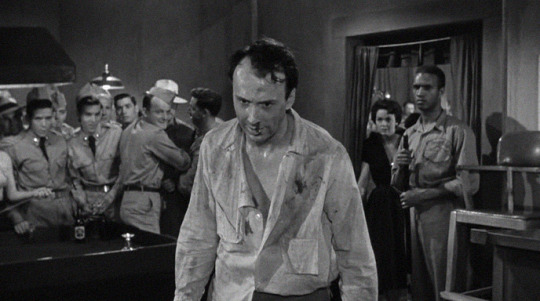
The Phenix City Story (1955)
Southeastern Alabama and southwestern Georgia are separated by the Chattahoochee River. Along the Alabamian banks of this river is Phenix City which, for over a century, became known as, “Sin City, USA”. Organized crime in league with the police department dealt in illicit drugs, fraud, rigged gambling operations, prostitution, and violence. These syndicates flourished on and around Phenix City’s 14th Street, and many of 14th Street’s patrons were Army soldiers visiting from nearby Fort Benning, Georgia (during the Civil War, deserting Confederate soldiers frequented Phenix City). So entrenched was Phenix City’s lawlessness that the city, state, and federal governments declined to do much to combat the organized crime. But in 1954, lawyer and Phenix City resident Albert Patterson ran for Attorney General of Alabama – campaigning partly on a platform to reform his hometown – and won. The Attorney General-elect’s assassination shortly before his swearing-in meant that Sin City, USA’s days were numbered.
With the events in Phenix City still in the news, Hollywood came knocking. Poverty Row studio Allied Artists envisioned an idea for a new movie – fast-tracking The Phenix City Story, directed by Phil Karlson (best known for his ‘50s film noirs) and a screenplay from Daniel Mainwaring (1947’s Out of the Past, 1956’s Invasion of the Body Snatchers) and Crane Wilbur (best known for acting alongside Pearl White in the 1914 serial The Perils of Pauline). Barely a year had passed since Albert Patterson’s assassination by the time of The Phenix City Story’s controversial release: this is a shockingly violent film for ‘50s Hollywood, and the film’s thirteen-minute documentary prologue was censored in the American South. Given Allied Artists’ lack of resources compared to the major Hollywood studios, The Phenix City Story is roughly acted, edited, and shot on occasion. But the film, shot on location and sometimes resembling a documentary, pulsates in its violent immediacy. Over time, it has shed its modest background to become a solid film noir.
Local lawyer Albert “Pat” Patterson (John McIntire) has lived in Phenix City for much of his life, privately despising the immorality plaguing downtown. Rhett Tanner (Edward Andrews) is the owner of Tanner’s Poppy Club – a den of booze and gambling where a bloody fistfight is shrugged off. Despite their disagreements, Pat and Tanner are friends and when the latter asks Pat to be part of a new citizens’ safety committee, he declines. Too many such committees have been created over the decades, sometimes masquerading as fronts for aiding criminal operations. However, Pat remarks, he is looking forward to something special. His son, John (Richard Kiley), is returning home from Germany after several years of prosecuting Nazi war criminals with wife Mary Jo (Lenka Peterson) and their children. When John, Mary Jo, and the children arrive, John is disappointed and Mary Jo is distraught at how Phenix City’s red-light district continues to be a hive of scum and villainy. A rapid turn of events involving the Patterson family’s friends and acquaintances – Ellie Rhodes (Kathryn Grant), Zeke Ward (James Edwards), and Ed Gage (Truman Smith) – will precipitate into a wave of assaults, bombings, and homicides that force Pat to run for Attorney General of Alabama.
Preceding most prints of The Phenix City Story is an introduction by journalist Clete Roberts, famous for his radio news reports, by then working for KNXT-TV (later KCBS) in Los Angeles, and is today best remembered for his role in two memorable episodes of M*A*S*H. Roberts, in the highly formal yet folksy journalistic style of mid-century America, interviews people who were close to the Patterson family or witnessed Phenix City’s violence leading up to Albert Patterson’s assassination. Roberts’ reporting is not as polished as it would eventually become. This makes the on-location prologue difficult to sit through, as Roberts asks too many leading questions and undeveloped questions that can be answered in one or a few words. The interviews do not flow smoothly between subjects. While these thirteen minutes make the rest of the film feel like a cinéma verité (generally, observational cinema) documentary within the mold of moody film noir, it can be grating to sit through. This review is based on a print of the film with the prologue included.
According to Ben Mankiewicz’s outro to the film on Turner Classic Movies (TCM) in January 2020, the prologue was placed into The Phenix City Story to allow the film’s violence – the film is not beyond brutal brawls and hoodlums murdering children – to bypass the Hays Code (which censored what could be shown in American movies until 1968, when it was replaced by the present-day MPA ratings system). If the film’s violence could be framed like a documentary, the censors agreed to allow depictions of bloodied characters, sultry women baring their legs, and a casual use of the epithet “nigger” by police officers on the syndicates’ payroll. The prologue – however flawed it is – allows The Phenix City Story to be as brutal as it is. Some theaters in the American South, noting that there was no requirement to show the longer version of the film (the one containing the prologue) they were provided, refused to show the prints with the prologue, deeming the Roberts interviews as inflammatory and impugning the South’s reputation.
Perhaps Allied Artists executives did not think the American moviegoing audience was ready for a diatribe on race relations, but one can see the United States’ historic racial violence at the film’s extremities, waiting to burst alongside the film’s general depiction of Phenix City’s criminal corruption. The film’s most horrifying moment is when Zeke Ward’s child is murdered by Tanner’s hitmen. Zeke, a black employee at Tanner’s Poppy Club who abandons his job after being barely involved on John Patterson’s side of a vicious clash, is targeted for being sympathetic to the Pattersons. That Tanner chose a black person as his first victim is no coincidence; when the police receive word of his murdered child, the officer on the line hangs up the phone and tells his colleagues: “Somebody just threw a dead nigger kid on Patterson’s lawn. Go out and have a look.” There is no urgent inflection in the officer’s voice, as if that call is considered less important because the victim is not white. As a partial aside, those few seconds make me wonder what the censors thought in that moment, as the Hays Code forbade “vulgarity and suggestiveness”, and recommended “good taste” in the depiction of law enforcement; nevertheless, enforcement over the use of “nigger” and other racial epithets did not have a consistently-enforced standard or discernible pattern of contextual exceptions. The Phenix City Story does not concentrate on race for the purposes of telling its story, but the white gangsters and their enablers imply – through their behavior, and if I may appropriate and slightly alter this contemporary line – that black lives could not matter any less.
The Phenix City Story is filled with unfamiliar faces; only those fluent in classic television (and I am not) might squint in half-recognition of the actors involved. There are no bravura performances here, but John McIntire and Edward Andrews – as the elders of this tale, Albert Patterson and Rhett Tanner – stand out from an otherwise lackluster crowd. George White’s (1946’s The Postman Always Rings Twice, 1947’s Green Dolphins Street) editing is consistent. To his credit, The Phenix City Story, outside of the prologue, is never dull as it blasts away at a rocket’s pace. But during the film’s most violent moments, White’s editing fails to hide some of Allied Artists’ low-budget limitations. In the moment where Zeke’s murdered child is tossed out of a car, White fails to hide the fact that the child is a dummy. On my first viewing, I found myself confused about what the dummy was supposed to be. Was it a plastic alligator, a wooden log? Whatever it was, it looked so terribly phony that I couldn’t contain my laughter. Cut to a close-up of the child’s lifeless face. I realize my laughter arrived at the worst possible time. Good thing I watched this film alone. Nevertheless, a better attempt at editing or an alternative angle could have deemphasized the artifice here and spared me (and probably many others) the mortification of laughing at the worst possible time.
The collaboration between director Phil Karlson and screenwriter Daniel Mainwaring led The Phenix City Story down the path of film noir. Karlson’s experience with film noir and Mainwaring’s expertise in tackling material taking place in small-town America gift this film its lurid, sweltering Southern atmosphere. The Southern hospitality disguising traces of malevolence, the notion that residential Phenix City is supposedly far away – geographically and culturally – from 14th Street, and the familiar banter between acquaintances who know each other’s names and families help The Phenix City Story feel authentic to the audience. It makes the film’s violence personal, even when the Pattersons are nowhere near the camera. Karlson, with journeyman Allied Artists cinematographer Harry Neumann (1940’s Midnight Limited, 1959’s The Wasp Woman), implement the chiaroscuro lighting characteristic in film noir to chilling effect – most notably as John Patterson walks into 14th Street on his first night back to visit the drugstore.
Alabamians who lived through or close to the times of The Phenix City Story say that the film achieves the atmosphere of what life in Alabama was like in the mid-1950s, even though the film contains numerous fabrications to dramatize the narrative. The real John Patterson became Governor of Alabama in 1959 and, ironically in comparison to his depiction here, was a segregationist politician. But Patterson, who later renounced those segregationist views, was considered a liberal figure in Alabama, and he was immediately followed by George Wallace. Following its prologue, The Phenix City Story convulses in rage. It denounces fully the criminal skullduggery that made possible a century of ill repute, though not the white racism that it barely brushes. And despite its technical hiccups and occasional dubious acting, it is a prime example of Southern-set film noir.
My rating: 7.5/10
^ Based on my personal imdb rating. Half-points are always rounded down. My interpretation of that ratings system can be found here.
For more of my reviews tagged “My Movie Odyssey”, click here.
#The Phenix City Story#Phil Karlson#John McIntire#Richard Kiley#Kathryn Grant#Edward Andrews#James Edwards#Lenka Peterson#Biff McGuire#Truman Smith#Clete Roberts#Daniel Mainwaring#Crane Wilbur#Harry Neumann#TCM#My Movie Odyssey
2 notes
·
View notes
Text
Readings for 2020
I aim to read a book a week, with ten poetry books to be also read along the year. I’ve chosen not to ration along fiction/nonfiction and other lines, except poetry, and just choose whatever I want to read.
I’ve also excluded academic stuff (at least in my field) from this list. Only 62 left to go!
Main Reads:
The Pre-Raphaelite Tragedy by William Gaunt
The Books of Earthsea by Ursula K. Le Guin
The Time’s Traveller’s Almanac edited by Ann and Jeff Vandermeer
Mythe et Épopée I. II. III. by Georges Dumézil
She-Wolves by Helen Castor
The Snow Leopard by Peter Matthiessen
Into the Unknown by Alexander Maitland
Inventions of the Middle-Ages by Chiara Frugoni
The Assassins by Bernard Lewis
The Southern Gates of Arabia by Freya Stark
Poetic Edda trans. by Carolyne Larrington
The Tin Drum by Günter Grass
Letters from Iceland by W.H. Auden and Louis MacNeice
Kolyma Tales by Varlam Shalamov
Les Bouts du monde by Roger Willemsen
The Face of War by Martha Gellhorn
The Collected Works of Kahlil Gibran
Bosnian Chronicle by Ivo Andrić
The Cloister and the Hearth by Charles Reade
The Early Romances of William Morris
Feudal Society by Marc Bloch
The Renaissance: Studies in Art and Poetry by Walter Pater
Behind the Wall by Colin Thubron
The Wanderer and Other Old English Poems
Getty Apocalypse
Winchester Psalter Miniature Cycle
Northanger Abbey by Jane Austen
Journaux de Guerre 1939-1948 by Ernst Jünger
Auriez-vous crié "heil Hitler" ? : Soumission et résistances au nazisme : l'Allemagne vue d'en bas (1918-1946) by François Roux
Life of William Morris I & II by J.W. Mackail
The Pre-Raphaelites by Aurélie Petiot
The House of Borgia by Christopher Hibbert
The Prince in Splendour: Court Festivals of Medieval Europe by Richard Barber
The Grasmere Journal by Dorothy Wordsworth
A Story as Sharp as a Knife: The Classical Haida Mythtellers and Their World by Robert Bringhurst
In Patagonia by Bruce Chatwin
Mani & Roumeli by Patrick Leigh Fermor
Seeds of Change by Henry Hobhouse
The Wannsee Conference and the Final Solution by Mark Roseman
We by Yevgeny Zamyatin
Voyageurs Arabes ed. La Pleiade
The Writer’s Map Huw Lewis-Jones
Coventry by Rachel Cusk
Lesbians Nuns by Rosemary Curb and Nancy Manahan
The Closed Doors by Pauline Albanese
The Book of Disquiet by Fernando Pessoa
Mrs Bridge by Evan S. Connell
Becoming Eve by Abby Stein
Red Clocks by Leni Zumas
The Pre-Raphaelite Dream by William Gaunt
The Book of Legendary Lands by Umberto Eco
Icelandic Folk Legends by Alda Sigmundsdóttir
Poetry:
Selected Poems of Yevtushenko
Golden Treasury of English Verse ed. by Francis Turner Palgrave
Selected Poems of Edward Thomas
Selected Poems of Wilfred Owen
Selected Poems of Rupert Brooke
Selected Poems of Anna Akhmatova
Georgian Poetry 1913-1915
Selected Poems and Songs of Robert Burns
If not, Winter: Fragments of Sappho trans. Anne Carson
The Complete Poems of Anna Akhmatova
6 notes
·
View notes
Text
Best War Movies to Watch: A Complete Streaming Guide
https://ift.tt/32Bbpxh
Sadly, the human race has pretty much never not been at war. We remain an ever violent, combative crew. Hopefully one day that’ll change and we’ll enter an era of unprecedented peace. Until then though, we have the movies!
War might be hell, but war flicks can be pretty great at times! Armed combat and all the other various theaters and forms of battle makes for high-octane drama and gripping backdrops. And that’s pretty much exactly what we are looking for out of our drama films.
What follows is a (mostly) comprehensive list of all the war movies available with a streaming subscription on the major streaming services. If you’re interested in paying per movie, options like Amazon, Google Play and YouTube should help broaden the field. Otherwise, scroll below because the films here are all free with a log-in subscription to Netflix, Amazon Prime, Hulu, or HBO Max.
‘71
Available on: Hulu (US), Amazon Prime Video (UK)
An underrated British thriller from the last decade, ’71 turns “the Troubles” in Ireland into a pseudo-horror movie. At a mere 99 minutes, this is lean, economical filmmaking with a barebones premise about a British solider (Jack O’Connell) who gets separated from his unit during a Belfast riot in 1971—the height of British-Irish tension. His plight to survive the night is riveting filmmaking and a grim look back to still fresh nightmares.
The African Queen
Available on: Amazon Prime Video (purchase only in UK)
An unlikely war movie at first glance, The African Queen is very much the story of two middle-aged people caught up in the chaos of the First World War. It’s also a crackling adventure yarn about autumn romance between a drunken river boat captain (Humphrey Bogart) and a Christian missionary (Katharine Hepburn) who’s brother was just killed by Germans in colonial Africa. Both set out to get down the river, and away from the Germans’ reach, in this charming John Huston classic with still stunning location photography.
The Alamo
Available on: Hulu
As an ironically little remembered version of the Alamo siege from director John Lee Hancock, The Alamo (2004) is still the best film version of these events. With a refreshing eye for historical authenticity instead of Texan mythmaking, the movie unpacks the lives of David Crockett (Billy Bob Thornton), James Bowie (Jason Patric), and William Travis (Patrick Wilson) with a warts and all approach. It also relays the events of the battle in its actual context at night, and in grim chaos, and gives needed attention to the overlooked contributions of the Tejanos to Texan independence.
Read more
Culture
The Alamo (2004) Deserves to be Better Remembered
By David Crow
Movies
Best Horror Movies on Netflix: Scariest Films to Stream
By David Crow and 2 others
But most significantly, it has a bittersweet soul as expressed in Carter Burwell’s score, which is at its most beautiful when Crockett climbs a parapet to serenade both sides of the battlefield with his fiddle.
A Bridge Too Far
Available on: Netflix (US Only)
The last of its kind, A Bridge Too Far is one of those old-fashioned all-star war epics about World War II that came into vogue between the 1950s and ‘70s. But this nearly all-British production is not about one of the Allies’ greatest triumphs, but rather one of their most disappointing defeats: the failure of Operation Market Garden in the Netherlands.
Director Richard Attenborough and screenwriter William Goldman try to squeeze it all in, which will honestly be exhausting to some viewers. For others, seeing a historically accurate (if too lighthearted) rendering of this battle with the likes of Sean Connery, Michael Caine, Gene Hackman, Anthony Hopkins, Ryan O’Neal, Robert Redford, and more will be enough.
Casablanca
Available on: HBO Max
Another Bogie movie where the war is adjacent to the central conflict, Casablanca is the best wartime melodrama ever produced. Some even consider it the greatest American movie for that matter. Actually made during the Second World War, there is a great rush of patriotic idealism and anxious uncertainty about its vision of a seedy Moroccan city that is ostensibly under free French rule, but is not-so-secretly being occupied by the Nazis. There everyone goes to Rick’s, a café run by a disillusioned American (Bogart) who sticks his neck out for nobody.
Read more
Movies
Best Classic Movies on HBO Max
By David Crow
Movies
Key Largo, Lauren Bacall & The Definitive Post-War Film
By David Crow
But Rick must soon pick up the fight again after an old flame named Ilsa (Ingrid Bergman) walks into his gin joint, bringing with her a French husband, a freedom fighter who has the Nazis breathing down his neck. All three are going to make some tough choices, as will complicit French police officer Louis (a marvelous Claud Rains) as the forces of World War II finally start pulling.
Cold Mountain
Available on: HBO Max
An attempt at an old fashioned sweeping wartime epic, Cold Mountain still brings modern historical insight to the oft-mythologized Civil War. The film is about several people from North Carolina’s Appalachian region. Like many Confederate soldiers, particularly from NC, Inman (Jude Law) has no slaves and no real reason to fight for the Southern cause. So after hellish battle, he deserts and attempts to make a sprawling trek back home.
Elsewhere, however, his sweetheart Ada (Nicole Kidman) must make hard decisions of her own with the leering eye of the Home Guard peeking over her shoulder, especially as word of Inman’s desertion reaches the mountains. An odyssey of the Civil War from the vantage of the impoverished it rolled over, Cold Mountain is a refreshing melodrama.
Da 5 Bloods
Available on: Netflix
Spike Lee’s latest joint is also one that opened up wounds from the Vietnam War that never really healed. Set more in the 2010s than 1960s, Da 5 Bloods follows four Black veterans who’ve ostensibly returned to Vietnam to find the remains of their fallen brother (Chadwick Boseman in one of his final roles). But they’re also here to reclaim gold that was stolen back in ’69.
Something of a heist movie, Lee mixes genres yet never loses sight about the anguish of those who fought in a war, and the legacy it leaves even decades and generations later.
The Dirty Dozen
Available on: HBO Max
Even if you haven’t seen Robert Aldrich’s epic 1967 adventure, the term “dirty dozen” and the basic premise of the movie have found their way into popular culture over the decades and influenced recent movies like Suicide Squad.
A grizzled (as if there’s any other kind) Lee Marvin leads a team of prisoners–including Ernest Borgnine, Charles Bronson, Jim Brown, John Cassavetes, George Kennedy, Telly Savalas, Donald Sutherland and more–on a suicide mission during World War II, with full pardons as their reward if they survive. The results are explosive and, at the time of release, controversially violent. They also make for one of the great war movies of the era.
Enemy at the Gates
Available on: Netflix, Amazon (US Only)
Sniper versus sniper; eagle versus eagle. That is the basic appeal of Enemy at the Gates, the rare Hollywood World War II drama where America is not even present. Rather this is a film about the war of attrition between the German and Russian forces at the Battle of Stalingrad, the nightmarish conflict which began turning the tide against the Third Reich. The movie features an all-star cast, including Jude Law, Ed Harris, Rachel Weisz, and Bob Hoskins, but it’s the chilly environs of hell on earth which make this worthwhile.
Five Came Back
Available on: Netflix
A film told in three parts, Five Came Back tracks the singular, and now fairly astonishing, choices made by five A-list Hollywood directors: John Ford, Frank Capra, George Stevens, John Huston, and William Wyler. They all chose to leave Hollywood either at the peak of their careers, or at the beginning of it, to make films about the Second World War. Each ultimately served as an officer, and several were in the actual thick of combat to capture war footage (and propaganda) for the first time in history. It was a patriotic and revealing choice then and now, and it’s examined with insight by the likes of Mark Harris and Steven Spielberg here.
Flags of Our Fathers
Available on: HBO Max
Not as good as director Clint Eastwood’s companion film told from the Japanese perspective, Letters from Iwo Jima, Flags of Our Fathers is nonetheless a worthwhile film. A rather skeptical look at the lives of American marines who were turned into an inaccurate legend by the U.S. military when they were photographed raising the American flag above the sands of Iwo Jima, the picture tracks the home lives of soldiers who did their job only too well and were then asked to return home as glorified heroes… and then live an ordinary American life.
The Four Feathers
Available on: HBO Max
One of the great British adventure films of the pre-war era, The Four Feathers is director Zoltan Korda’s sweeping reimagining of the A.E.W. Mason novel. Set during Britain’s colonial wars in Egypt and Sudan during 1882, the film tracks an English officer who only took a commission in the military to honor his family’s ancient war record. However, when the call of war comes, he fears he would not do his duty in battle and resigns his service… so his three friends and even a fiancée give him four white feathers: white for cowardice.
Read more
TV
Best Horror TV Shows on Amazon Prime
By Alec Bojalad and 1 other
Movies
The Best Horror Movies to Stream
By Alec Bojalad and 1 other
To redeem himself, he travels to Sudan and helps the British cause while posing as a local. Filmed on actual African locations and in glorious Technicolor at a time when American movies were afraid to leave California, The Four Feathers is a classic (and politically incorrect) throwback.
Gallipoli
Available on: Amazon
Australian filmmaker Peter Weir has directed just 13 films, but probably 10 of them are classics, and this 1981 drama is one of them. A 25-year-old Mel Gibson stars as one of several young men who enlist in the Australian Army during the First World War. They eventually find themselves on the Gallipoli Peninsula in Turkey, site of a costly and lengthy battle that ended in defeat, but marked a turning point for Australia’s perception of itself and its place in the world and a seemingly disinterested British Empire. It’s a harrowing tale about the loss of innocence, national character, and the price of war for both.
Glory
Available on: Netflix (US Only)
Arguably the greatest film ever made about the American Civil War, Edward Zwick’s Glory continues to shine like one gallant rush. Based on the lives of the 54th Massachusetts Infantry regiment, the film tracks the hard fight for respect—and freedom—endured by the first African American regiment in U.S. history.
Read more
Movies
Glory and the Legacy of the Most Graceful Civil War Movie
By David Crow
Culture
The 12 Best Civil War Movies
By David Crow
With a still crackling ensemble that includes Morgan Freeman, Matthew Broderick, Andre Braugher, and Denzel Washington in his first Oscar winning role, the movie both mythologizes and humanizes the 54th’s struggle as the American struggle. It also soars with James Horner’s most transcendent and ethereal musical score.
The Great Dictator
Available on: HBO Max
The rare comedy on this list, The Great Dictator was a film of political courage by writer-director-producer-and-star Charlie Chaplin. Filmed in 1940 when much of the world was already at war, but the United States was not, this Hollywood film made a farce out of the hatred and fascism of the Third Reich, with Adolf Hitler being especially skewered.
Read more
Movies
Harry Potter Movie Streaming Guide: Where to Watch Online
By Kayti Burt
Movies
Inglourious Basterds and the Immortality of Revenge Cinema
By David Crow
In the film, Chaplin plays both a fictional barber and Hitler-like dictator who switch places in a Prince and the Pauper styled mix-up. Chaplin thus makes a still hilarious deconstruction of Hitler’s madness and insecurities at a time when most Hollywood studios chose to pretend there wasn’t a war going on. The film also concludes in one of the greatest anti-war speeches in cinema history.
Hacksaw Ridge
Available on: HBO Max, Amazon Prime Video UK
The rare film that is told in merely two acts, director Mel Gibson’s World War II drama is fairly underrated. The film follows the remarkable true story of Desmond Doss (Andrew Garfield), an unlikely U.S. Army corporal since he was also a conscientious objector who refused to hold a gun. Nearly court-martialed for his defiance of orders, as a medic Doss insisted he could serve his country well by saving lives on the battlefield. He got his chance at the Battle of Okinawa when he pulled 75 lives out of the carnage, which is captured in grisly detail by Gibson. Likely the bloodiest WWII movie since Saving Private Ryan, Hacksaw Ridge is also one of the best.
Hamburger Hill
Available on: Amazon Prime Video (US Only)
This 1987 film set during the Vietnam War recounts one specific mission: a 1969 assault by the U.S. Army’s 3rd Battalion, 187th Infantry, 101st Airborne Division, known as the “Screaming Eagles,” on a well-fortified North Vietnamese position near the Laotian border. Dylan McDermott, Don Cheadle, Courtney B. Vance, and Steven Weber all make early career appearances in the film as young soldiers thrust into a situation where victory almost seems more like defeat—as good a metaphor for the Vietnam conflict as any.
Hostiles
Available on: Netflix
Director Scott Cooper did the rare thing with Hostiles: He looked back at American history with nuance and sincere contemplation. This film is ostensibly about a U.S. Cavalry officer on his final mission, which is to escort a family of Native Americans across the last remnants of American frontier. But when that officer (Christian Bale) knows he’s escorting the dying Cheyenne war chief (Wes Studi) who led the doomed side of American Indians in previous conflicts—and alongside a woman (Rosamund Pike) who just lost her family to Indian attacks—the ghosts of America’s sins and recriminations walk with them.
The Hurt Locker
Available on: Hulu, Netflix UK
The film which won Kathryn Bigelow the Oscar for Best Director, The Hurt Locker is the first great movie about the War on Terror in the 21st century. Boiling down the madness of war to being like “a drug” for some soldiers, the film essays the high-stake tension—and adrenaline—of being an officer in the Army’s bomb squad who is responsible for disarming IEDs, bomb vests, and other hidden weapons of death.
It’s terrifying… and exhilarating as personified by Jeremy Renner’s addicted Staff Sgt. William James. Also with a career-making performance by Anthony Mackie and a pseudo-journalistic script by Mark Boal, The Hurt Locker gets under your skin.
Platoon
Available on: Netflix, Amazon Prime Video (US Only)
There were plenty of Vietnam War movies before Oliver Stone’s Platoon, but what shook audiences in 1986 is that this was the first time one was made by a Vietnam veteran. Not that Stone didn’t take liberties: He makes his soldier’s eye view of the generation-defining conflict a fever dream of America’s darkest moments in the shit.
Read more
Movies
Da 5 Bloods Opening History Montage Explained
By David Crow
Movies
James Bond Movies Streaming Guide: Where to Watch 007 Online
By Don Kaye
But his lament for the soldier also brought a renewed sense of sorrow and regret to how veterans were treated in the aftermath. With a heartbreaking supporting performance by Willem Dafoe, whose demise in the film has become iconic, there’s a reason for many this remains the only Vietnam War movie of consequence.
Red Tails
Available on: HBO Max
Here is executive producer George Lucas and director Anthony Hemingway’s well-meaning but so-so aerial war epic about the Tuskegee Airmen. The real-life Black pilots, mechanics, bombardiers, and more made up a segregated flank of African American airmen (as well as flyers from Haiti, Trinidad, and other Caribbean nations) in World War II. This film attempts to honor them with a cast that includes Terrence Howard, David Oyelowo, Nate Parker, and Cuba Gooding Jr.
War Machine
Available on: Netflix
David Michod (Animal Kingdom) wrote and directed this Netflix satire set during the ongoing war in Afghanistan, eight years after the 9/11 attacks. Brad Pitt stars as four-star general Glen McMahon (loosely based on real-life general Stanley McChrystal), whose bleak assessment of the situation on the ground puts him at odds with President Obama and others. Like other less-than-reverent films before it, War Machine is interested in the sheer insanity of war: doing the same thing over and over again while hoping for a different outcome.
cnx.cmd.push(function() { cnx({ playerId: "106e33c0-3911-473c-b599-b1426db57530", }).render("0270c398a82f44f49c23c16122516796"); });
The post Best War Movies to Watch: A Complete Streaming Guide appeared first on Den of Geek.
from Den of Geek https://ift.tt/3kkkpwT
2 notes
·
View notes